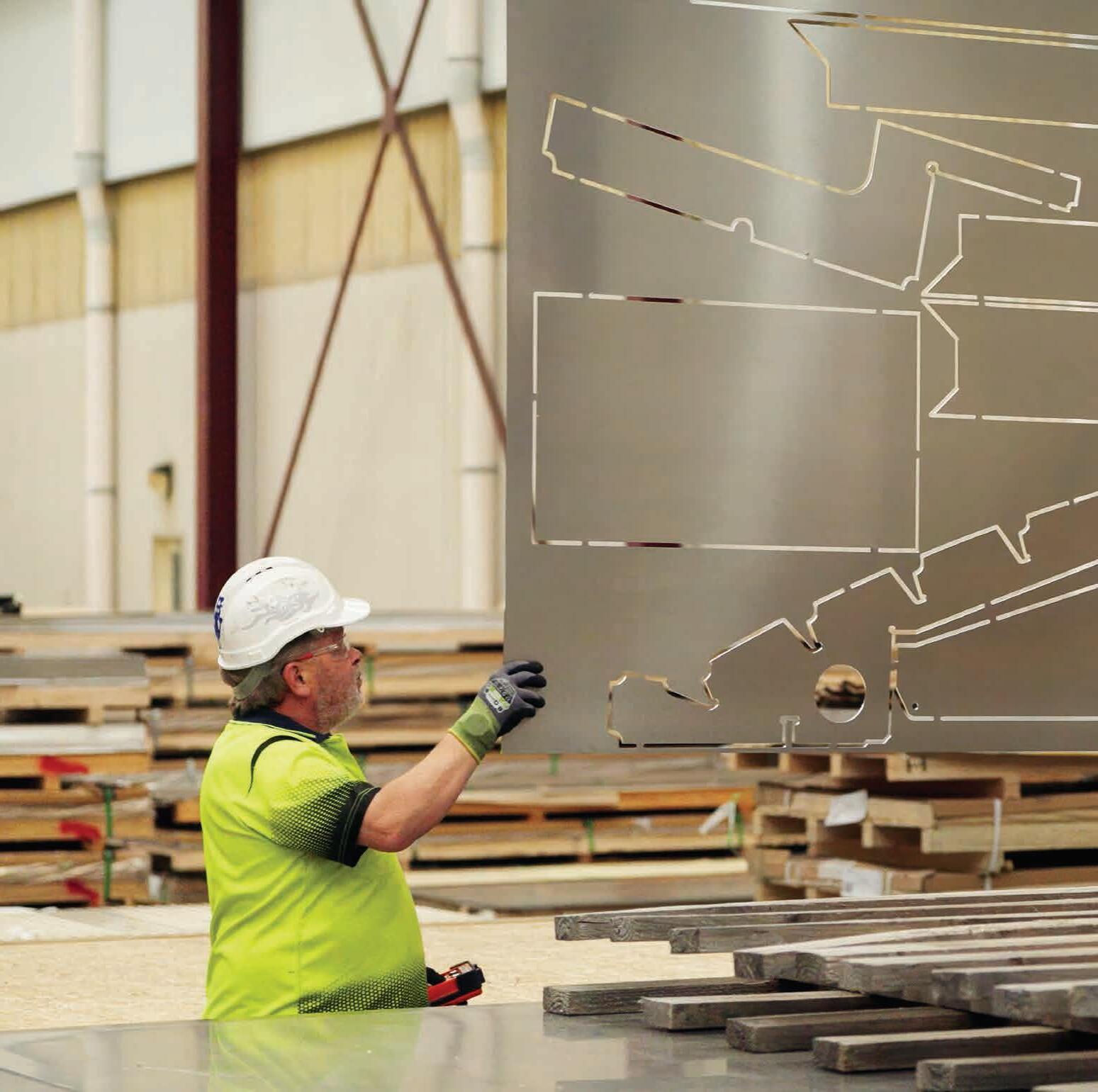
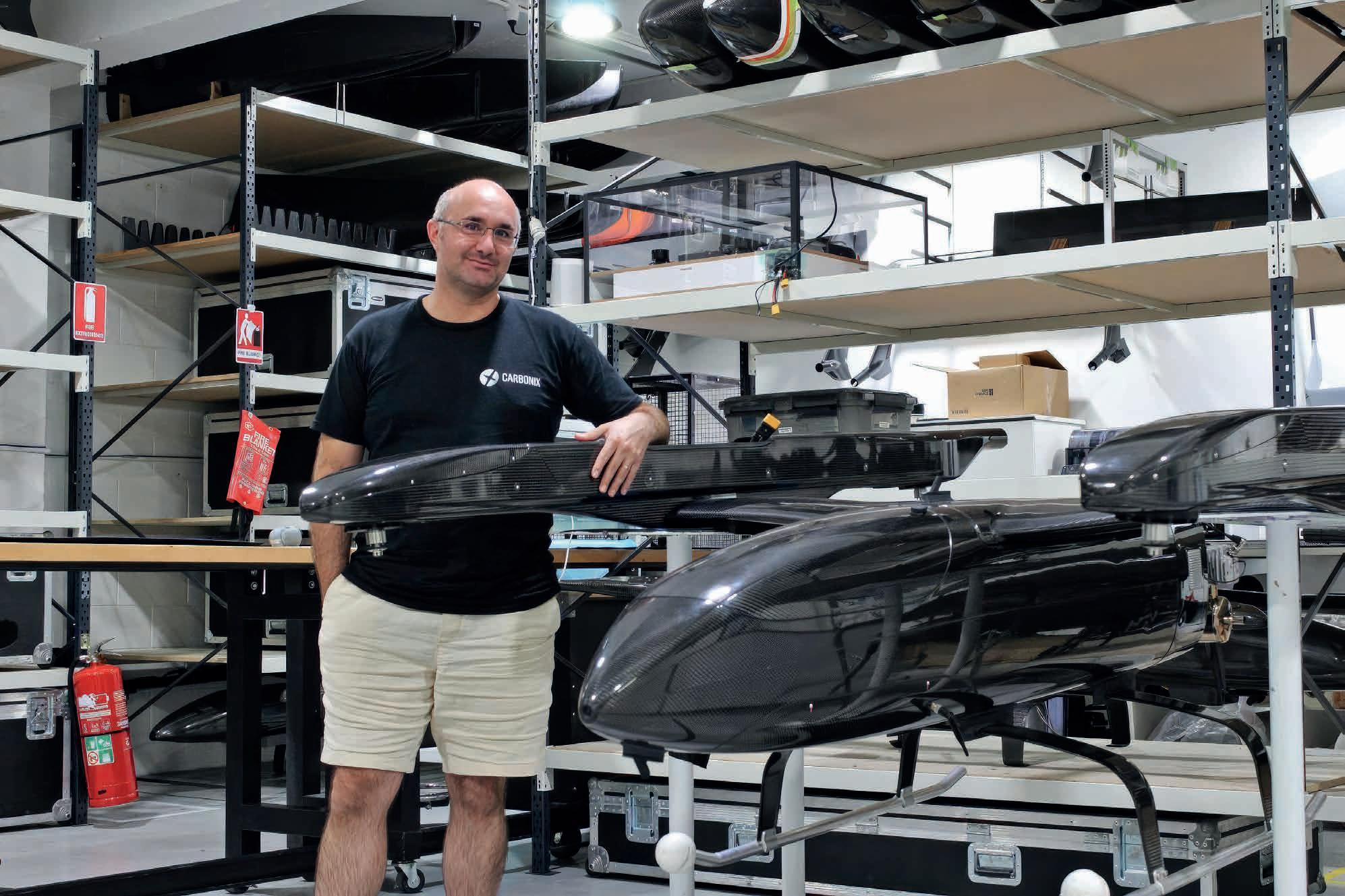

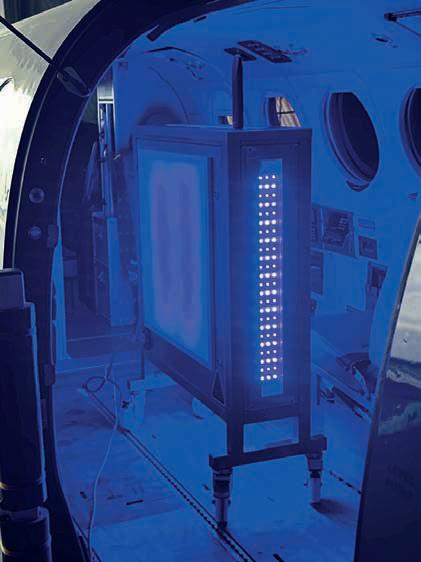

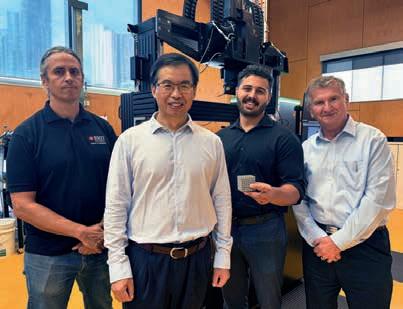
manmonthly.com.au MANAGEMENT >> TECHNOLOGY >> SOLUTIONS MAY 2024 >> INSIDE >> 32 Capral’s trusted quality 30 Official Industry Partners: FROM YACHT RACING TO UAV MANUFACTURING 3D printed metamaterial 47










manmonthly.com.au twitter.com/Manmonthly
CEO: John Murphy
Chief Operating Officer: Christine Clancy
Managing Editor: Syed Shah
Assistant Editor: Phillip Hazell phillip.hazell@primecreative.com.au
Production Coordinator: Michelle Weston michelle.weston@primecreative.com.au
Art Director: Blake Storey
Design: Cat Zappia
Sales/Advertising: Emily Gorgievska Ph: 0432 083 392 emily.gorgievska@primecreative.com.au
Subscriptions
Published 11 times a year
Subscriptions $140.00 per annum (inc GST) Overseas prices apply Ph: (03) 9690 8766
Copyright Manufacturers’ Monthly is owned by Prime Creative Media and published by John Murphy. All material in Manufacturers’ Monthly is copyright and no part may be reproduced or copied in any form or by any means (graphic, electronic or mechanical including information and retrieval systems) without written permission of the publisher. The Editor welcomes contributions but reserves the right to accept or reject any material. While every effort has been made to ensure the accuracy of information, Prime Creative Media will not accept responsibility for errors or omissions or for any consequences arising from reliance on information published.
The opinions expressed in Manufacturers’ Monthly are not necessarily the opinions of, or endorsed by the publisher unless otherwise stated.
© Copyright Prime Creative Media, 2024
Articles
All articles submitted for publication become the property of the publisher. The Editor reserves the right to adjust any article to conform with the magazine format.
Head Office
379 Docklands Drive
Docklands VIC 3008
P: +61 3 9690 8766 enquiries@primecreative.com.au www.primecreative.com.au
Sydney Office
Suite 3.06, 1-9 Chandos Street
St Leonards NSW 2065, Australia
P: +61 2 9439 7227
Printed by: The Precision Group
83-89 Freight Drive. Somerton Vic 3062 Ph: (03) 9794 8337


In this issue’s Manufacturer Focus, we explore the company, Carbonix, an unmanned aerial vehicle manufacturer based in Sydney. We examine how the founder, Dario Valenza, identified a niche in the drone market and sought to address it. Later in this edition, we catch up with Capral, and discuss their journey in facilitating PCW Commercial Windows.
Lastly, in this month’s Engineering Focus, we look at RMIT’s new metamaterial, which has demonstrated unprecedented strength-to-weight ratios rarely observed in manufacturing.
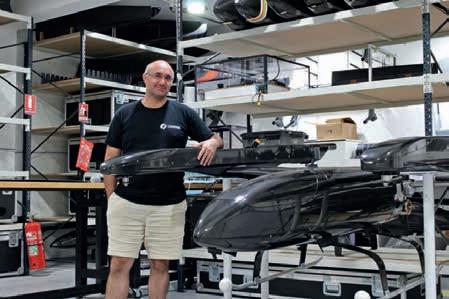




facebook.com/Manmonthly
For daily news visit manmonthly.com.au 30 44 Behind the cover MAY 2024 04 Editor’s Note 07 Weld Comment 10 SEMMA Comment 13 News 26 Manufacturer Focus 30 Aluminium Manufacturing 32 Endeavour Awards 38 Manufacturing Consulting 40 Materials Handling 42 Defence Insight 44 Engineering Focus 48 What’s New 50 Last Word Manufacturers’ Monthly Contents manmonthly.com.au MANAGEMENT >> TECHNOLOGY >> SOLUTIONS MAY 2024 >> INSIDE >> 32 Capral’s trusted quality 30 Official Industry Partners: FROM YACHT RACING TO UAV MANUFACTURING 3D printed metamaterial 47 1300 ALUMINIUM capral.com.au At Capral, we are experts in the supply of extruded and rolled Aluminium products along with aluminium processing solutions. Our CNC flatbed routers in Perth, Western Australia, can deliver accurate and efficient cutting and making of complex shapes with optimal material utilisation. Capral’s experienced team are experts in nesting for the marine and transport industries and committed to collaborating with our customers to ensure exceptional outcomes for each project. If it’s aluminium processing you need,
linkedin.com/showcase/manufacturer’s-monthly/

Australia’s manufacturing excellence: A vision for the future
In the Australian manufacturing industry, the convergence of strategic investments and breakthrough technologies marks a pivotal moment in the nation’s industrial evolution. As we navigate the crossroads of innovation and sustainability, it’s essential to spotlight these key highlights that position Australia as a global leader in the manufacturing renaissance.
The Graphene Manufacturing Group (GMG) securing a $2 million grant from the Queensland Critical Minerals and Battery Technology Fund signifies a significant leap in battery technology development. The Automated Battery Pilot Plant, dedicated to producing GMG’s pioneering Graphene Aluminium Ion Battery, embodies the innovative spirit thriving within our borders. Such government-backed initiatives not only fuel economic growth but also place Australia at the forefront of next-generation battery technology.
Simultaneously, the Solar Sunshot program, backed by a robust $1 billion funding initiative, heralds a monumental stride towards cementing Australia’s position in solar photovoltaic (PV) manufacturing. Delivered by the Australian Renewable Energy Agency (ARENA), this ambitious program aims to transform the rich tapestry of local solar PV innovation into commercial success, promising significant job creation and international competitiveness in solar manufacturing.
In the aerospace sector, the commissioning of a new multi-metal 3D printer in Melbourne unveils unprecedented manufacturing capabilities. Its ability to produce aerospace components that are lighter, faster, and more robust can dramatically reduce costs and enhance the efficiency of space missions, showcasing Australia’s potential to contribute significantly to the global aerospace industry.
Moreover, the University of Adelaide’s advancement in transforming special glass rods into optical fibre aboard the International Space Station represents a leap forward in quantum communication technologies. This achievement, in collaboration with Flawless Photonics Inc., not only showcases Australian innovation on an international platform but also underscores the potential for significant advancements in telecommunications.
The deployment of CSIRO’s 3D mapping technology to the International Space Station illustrates the ingenuity within Australian manufacturing. Aimed at creating detailed threedimensional maps of the orbiting laboratory, this technology enhances operational efficiency and safety in space missions, redefining the logistics of space exploration.
Furthermore, the Regional Microgrids Program’s exploration of long-duration energy storage technologies underscores the
intersection of innovation and sustainability within the energy sector. The trial of novel solutions, such as Redflow’s zinc bromine flow battery and BASF’s sodium sulphur battery, takes significant steps toward a sustainable and resilient energy future, showcasing Australia’s leadership in the deployment of advanced energy solutions.
As we reflect on these achievements, it’s evident that the Australian manufacturing sector is not just navigating the challenges of the present but is actively shaping a future defined by innovation, sustainability, and global leadership. For the decision makers in the industry, these developments offer a kaleidoscope of opportunities and challenges. It should be the industry’s collective responsibility to harness these advancements, foster collaboration, and drive strategic investments that will secure its place in the global manufacturing arena.
There is reason to be inspired by the innovation and progress that define the journey towards a vibrant and sustainable manufacturing future. For the industry leaders in this sector, it is important to continue to champion the spirit of innovation, sustainability, and excellence. Australian manufacturing looks set to forge a path for itself but also contributes positively to the global community.
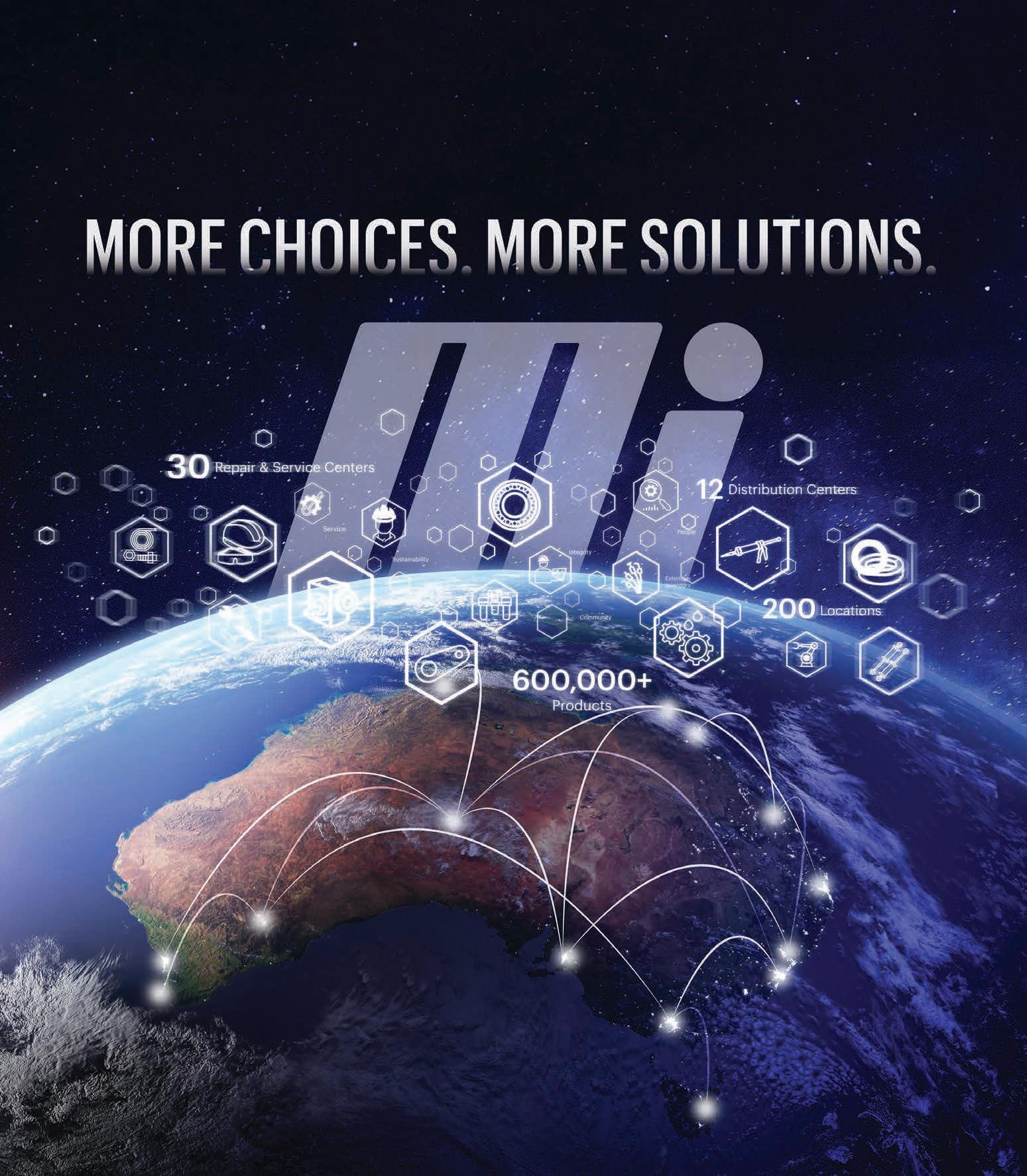

4 Manufacturers’ Monthly May 2024 Image: surassawadee/stock.adobe.com NEWS EDITOR’S NOTE SYED SHAH – MANAGING EDITOR, MANUFACTURERS’ MONTHLY


1300 211 954 Motion.com.au Agriculture | Food and Beverage | Mining | Manufacturing | Quarry and Cement | Waste Water
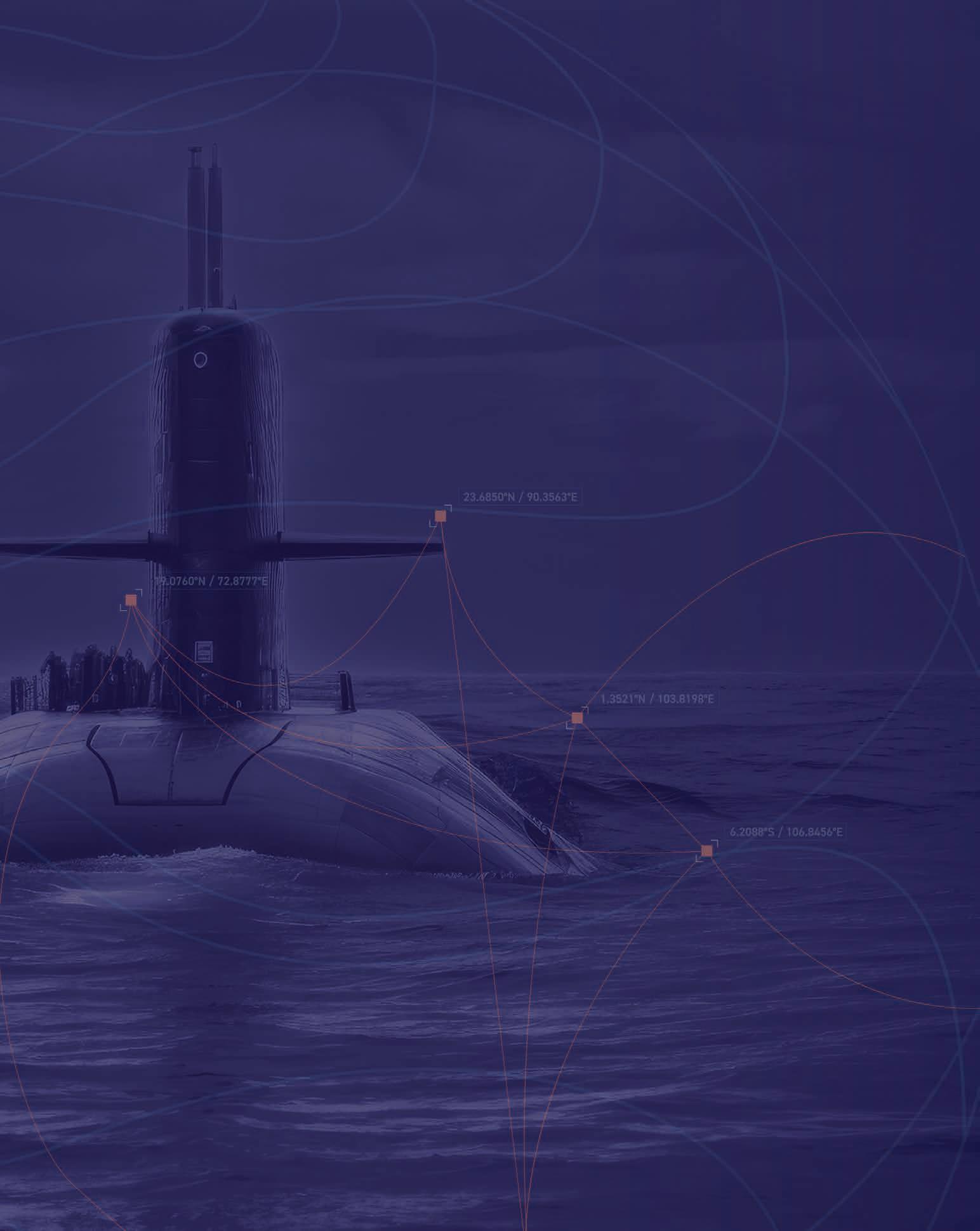
WHERE AUKUS MEETS THE QUAD Department of Jobs, Tourism, Science and Innovation GOVERNMENT OF WESTERN AUSTRALIA PARTNERS ORGANISER Defence Security Industry Commerce LEARN MORE WWW.IODS.COM.AU The AUKUS and Quad international partnerships will transform Indian Ocean security, commerce and Australia’s industry capability. Conference and Exhibition Do Business In Great Waters FIND OUT HOW – JOIN THE PROGRAM AT IODS 2024 Contact the IODS Conference and Exhibition team expo@amda.com.au


Productivity: An essential ingredient for sustainable economic growth
The Productivity Commission’s recently released Annual Productivity Bulletin 2024 shows that Australia’s labour productivity fell sharply in 2022-2023, as a record-breaking increase in hours worked failed to generate a corresponding increase in economic output.
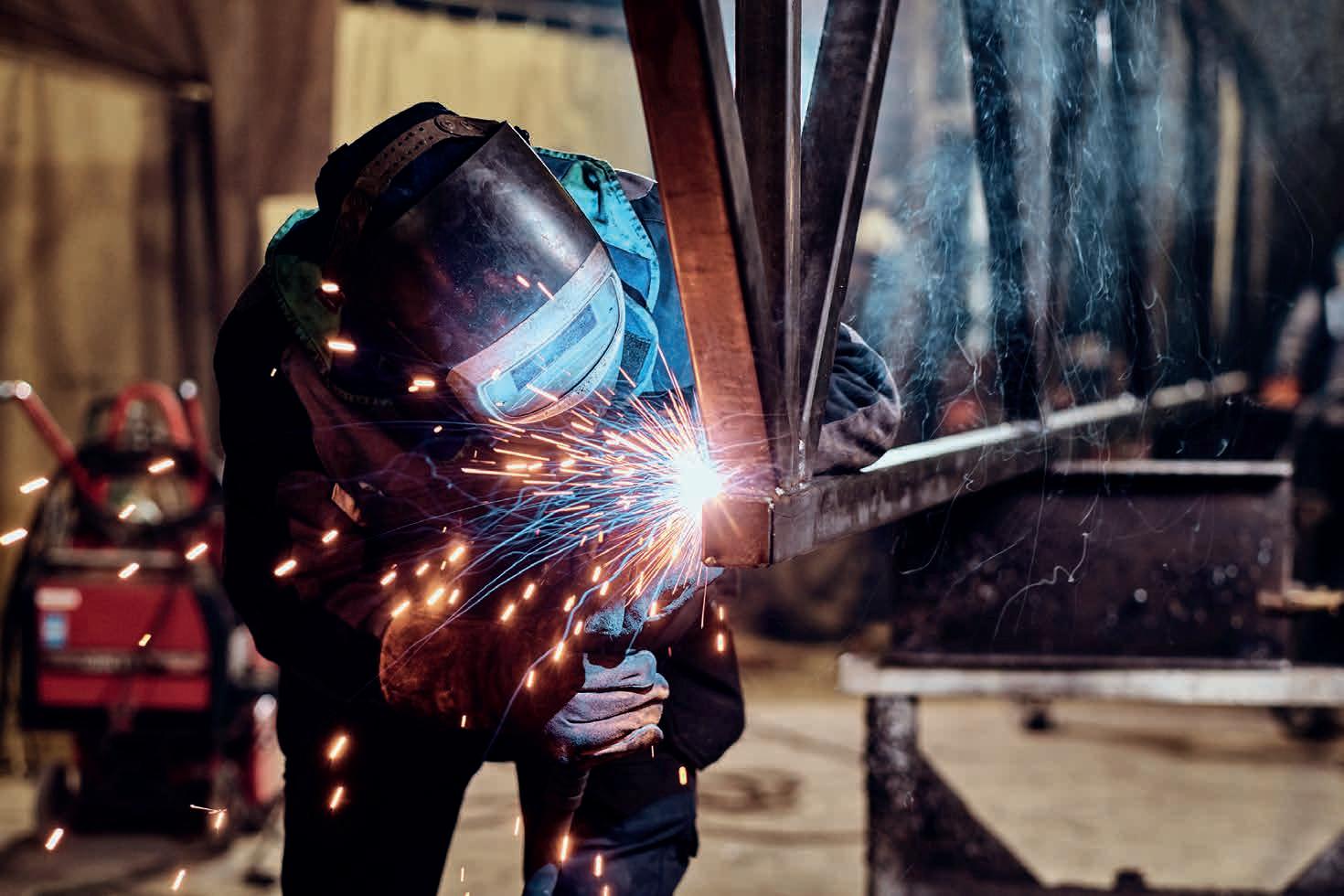
Labour productivity fell by 3.7 per cent – well below the long-term average growth rate of 1.3 per cent. This result was driven by a 6.9 per cent increase in hours worked by Australians –the highest annual increase in history.
The capital-to-labour ratio also fell by 4.9 per cent in 2022-2023 – the highest recorded decline in Australia’s history. This means that while a record number of Australians had jobs, employers did not invest in the equipment, tools and resources
needed to fully realise employees’ skills and talents and turn our strong employment growth into strong productivity growth.
Similarly, the manufacturing industry saw a 1 per cent decrease in labour productivity and 1.1 per cent decline in overall output. Such statistics signal an urgent call for action to address these productivity challenges, particularly as the manufacturing industry remains a crucial pillar in the Australia’s economic framework.
Sustainable economic growth
Productivity gains are essential for sustainable economic growth, and they hinge on increasing efficiency rather than merely working harder or longer. With Australia’s labour force participation rate already at peak levels, further growth in income cannot be sustainably derived from just putting in more hours or increasing our workforce. Productivity is essential to any nation’s economy, serving as a building block of prosperity. When
7 manmonthly.com.au Manufacturers’ Monthly
COMMENT GEOFF CRITTENDEN – CEO, WELD AUSTRALIA Image: Fxquadro/stock.adobe.com
Australia’s labour productivity fell 3.7 per cent due to increased hours worked and declining investment in resources.

productivity rises, more value is generated per hour of work, which translates to increased economic output and, consequently, higher standards of living. Productivity fuels economic growth without necessitating a proportional increase in input, such as labour or capital investment. This efficiency gain enables an economy to expand its goods and services, reduce prices for consumers, and increase wages for workers without triggering inflationary pressures.
Robust productivity growth can lead to greater spending power for governments, allowing for enhanced public services or reduced taxes, and can create a surplus for investment in crucial areas like education, infrastructure, and innovation. As a catalyst for global competitiveness, productivity growth is a necessary ingredient of sustained economic vitality and social advancement.
Productivity in Australia’s welding industry
Recognising the significance of productivity to the broader economy sets the stage for a closer look at the welding industry, where its importance is equally critical for driving growth and innovation.
Streamlining operations to complete welding tasks more efficiently translates directly into cost savings and competitive pricing. Productivity is often synonymous with quality. Advances in welding techniques and technology not only boost the rate of production but also enhance the quality and repeatability of the welds themselves. This reduces rework, bolstering a company’s reputation and operational efficiency.
Effective resource utilisation is another byproduct of heightened productivity. When operations are optimised, material, labour, and equipment are used to their fullest potential, minimising waste and fostering a leaner inventory management system. This efficiency extends to energy consumption and consumable use, for improved sustainability.
From a client perspective, heightened
productivity equates to expedited project completion times. This is crucial for meeting delivery deadlines, maintaining a solid customer service record, and ensuring repeat business. It also influences safety standards within the industry; efficient workflows reduce the exposure of workers to potential hazards, thereby lowering the incidence of workplace accidents.
Innovation, too, is a natural outgrowth of a focus on productivity. As companies strive for improved processes, they are often propelled to adopt cutting-edge technologies and methodologies, potentially unlocking new business opportunities and market expansions.
Measuring productivity in the welding industry
So then, how is productivity measured in the welding industry? Among various metrics, arc-on time per welder per shift is a significant indicator of performance.
Firstly, arc-on time directly correlates with output. Welding is a manufacturing process, and like any such process, the time spent actively working on the product determines the speed and volume of output. By measuring arc-on time, companies can quantify the active time welders spend creating value, enabling a clear view of their contribution to production targets.
Secondly, tracking arc-on time encourages operational efficiency. It prompts a closer look at how time is managed, pushing for a reduction in idle periods and optimising workflow and processes. It is not uncommon to find that a substantial portion of a welder’s day is consumed by activities that do not include welding, such as setting up, grinding and cleaning. Identifying and minimising these periods can significantly enhance overall productivity.
Understanding arc-on time can guide workforce development and training programs. By analysing this metric, a company can identify skill gaps and training needs, ensuring that welders are proficient
and can maximise their arc-on time. This focus on skill enhancement not only boosts productivity but also promotes a culture of continuous improvement and professional development within the workforce.
For varying labour hours, the operating factor is also an important metric – it gives a more accurate indication of a workshop’s productivity. To determine the operating factor, a simple sum is used: arc-on time divided by total labour hours, multiplied by 100. The average operating factor in Australia is currently 20 per cent. The operating factor is an indication of how much of a welder’s day is spent welding.
Weld Australia’s productivity improvement projects
Weld Australia is set to undertake two projects designed to improve the productivity of Australia’s welding and fabrication industry.
Our first project will involve the measurement of welder productivity as defined by the number of arc-on time per welder per shift.
According to member reports, the average arcon time for a welder in Australia is approximately two hours. However, in countries such as Germany and the United States (which have equivalent Workplace Health and Safety standards to Australia), industry works on an average of five hours on-arc per welder per day. This is obviously a marked difference.
Simplistically, if Australia could increase its productivity to internationally competitive rates, we could effectively double the welding capacity of our industry. This would go a long way to solving the issue of labour shortages and capacity constraints.
Weld Australia will undertake in-depth research into Australia’s welding practices and productivity and compare this to the situation in Germany and the United States. We will then review possible solutions, such as leveraging Trades Assistants to complete tasks like griding, set up and cleaning, or using robots and cobots.
The second project Weld Australia is working on is a productivity-based training scheme. Under this program, Weld Australia would help fabrication businesses conduct their own staff training. We would provide advanced learning resources, train their trainer, accredit their training facility, and then certify welders according to ISO 9606 or AS/ NZS ISO 1554.
Fabrication companies would be able to quickly qualify production welders able to successfully undertake fillet welds, rather than waiting three years or more for a Certificate III or IV trained welder. Weld Australia is currently seeking grant funding, which would enable us to implement the project at little to no cost for members.
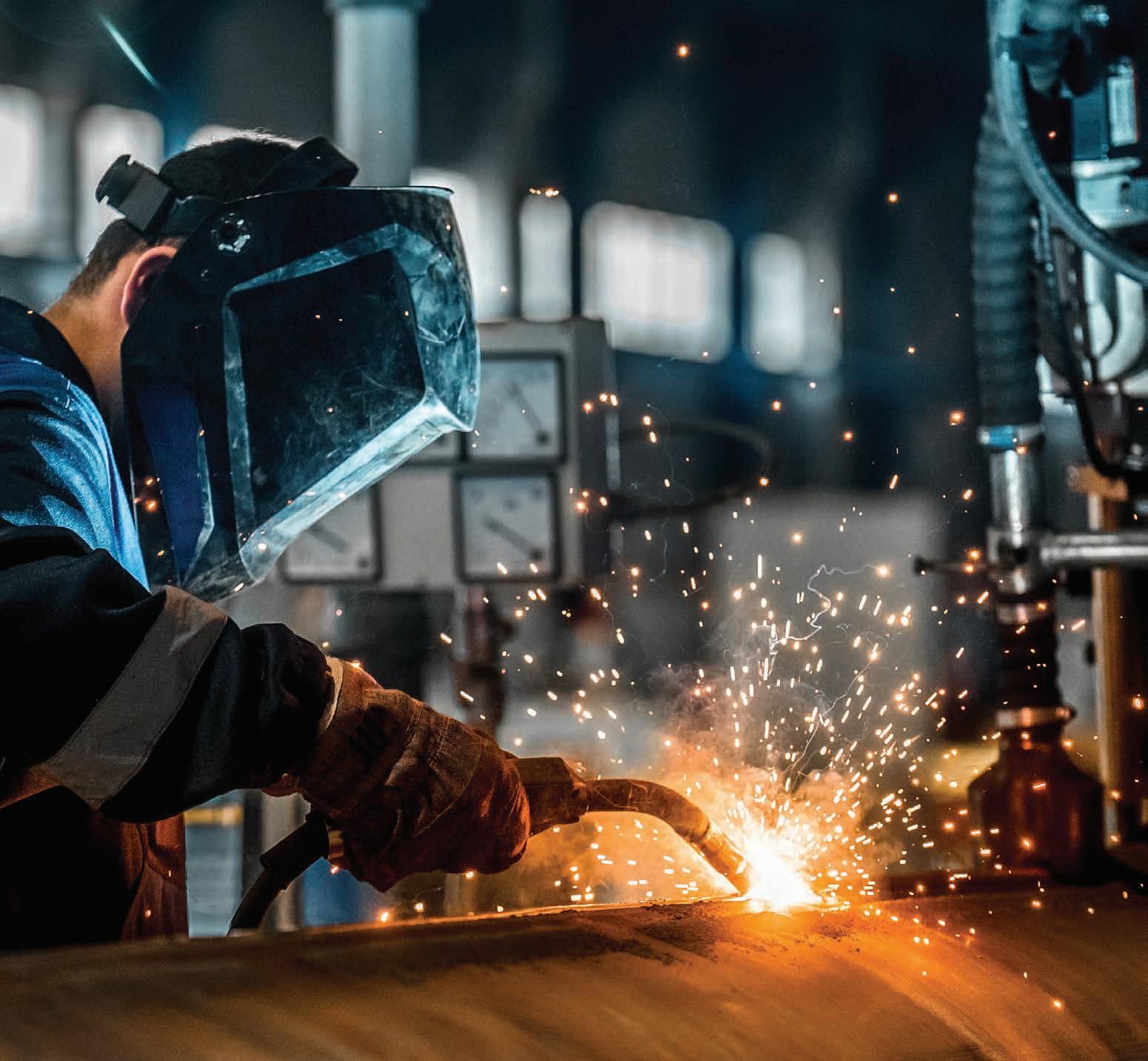
8 Manufacturers’ Monthly May 2024
Image: wi6995/stock.adobe.com
Weld Australia is set to undertake two projects designed to improve the productivity of Australia’s welding and fabrication industry.

4 SPONSORSHIP OPPORTUNITIES NOW! OPEN RECOGNISING AUSTRALIA’S BEST MANUFACTURERS endeavourawards.com.au 07.11.2024 MELBOURNE SPONSORED BY

COMMENT
HONI WALKER - CEO, SEMMA
Manufacturers told to “accept or object” land tax increase by government body
The Southeast Melbourne Manufacturers Alliance (SEMMA) challenges the response from the government’s land valuation body – Valuer General Victoria (VGV).
In what has become a roundabout, SEMMA has discovered that the VGV uses contracted valuers who use a complex calculation with variances of statistical tolerances as part of their formula.
Suffice to say, you need an economics degree and a degree in land valuation to work out these increases.
While the VGV director did commit to full disclosure in the valuation process, he did note that it comes with a 10 per cent buffer and noted that there were ‘significant variations of industrial properties.’ Of course, we will have to work through the information on their website to understand the process.
Parliamentary Inquiry into Land Tax process
SEMMA is calling for a cap on increases in Land Tax and a cap on Land Valuations if we cannot be exempt. SEMMA CEO Honi Walker said, “These increases have been felt across our entire membership base and the affects will be felt at the consumer level when we are forced to increase our prices to cover these tax hikes. If you thought
the cost of living was high now – just wait until manufacturers and the supply chain pass on their land tax increases. It just doesn’t pass the pub test.”
“There is no justification for these increases in Land Value. It’s a tax grab from a government that is drowning in debt.”
“SEMMA believes manufacturers should be exempt from this Land Tax increase as we are part of an essential service, and our Sovereign Capability may be at risk,” Walker said.
SEMMA is consequently encouraging all members to appeal their assessments.
Background
In a survey to SEMMA members, 100 per cent of respondents said they were facing extreme increases in Land Tax from last year.
SEMMA’s survey revealed one member’s tax bill in 2023 with the Land Value in Dandenong at $3.75m and Land Tax was $47,100. In 2024 Land Value increased to $4.3m and Land Tax jumped to $66,100.
Another Member located in Hallam, their land

was valued at $4.2m in 2023 with a Land Tax of $58,575 and in 2024 it jumped a staggering 55 per cent in valuation to $8.5m with a Land Tax of $177,400.
Another member example 2023, one of the members’ Land Value was $4.1m and Land Tax was $56,407. In 2024, the Land Value is now $6.35m with a Land Tax of $120,425. That’s over 50 per cent increase.
“Manufacturers are being gouged by the state government. We kept the state’s economy going during COVID as manufacturing was designated an essential service”, said Walker.
“We continued to pay ever-increasing taxes –(land, payroll, FBT, PAYG, Capital Gains Tax, GST and Company Income Tax) plus an increase in Work Cover premiums in some cases over 70 per cent – you name it, we paid it. And we did not receive any government hand-outs to keep our doors open, unlike other industries that are now closing for a range of reasons.
“Now we are being asked to cover a debt that we did not create. There is no justification for this

10 Manufacturers’ Monthly
The two production lines at the factory in Epping deliver both the Navara and Patrol Warriors.

Land Tax increase on manufacturers,” said Walker.
“Manufacturing cannot continue to cover the government’s COVID debt burden. Manufacturers are being penalised for running profitable businesses – businesses that are the engine room of our state’s economy.
“Our members, if forced to pay these unwarranted taxes have said it will impact their ability to employ more people, invest in capital equipment and may even be forced to close, causing huge job losses. Companies may even reconsider establishing new businesses in Victoria with taxes this high. We are the most taxed state in Australia,” said Walker.
No clear responses
The VGV and government could not provide clear responses to the following asked by SEMMA:
1. C an the government provide transparent reasoning and evidence behind the substantial increases in land values and consequent land tax burdens on local manufacturers, particularly those exceeding 50 per cent within a year?
2. How does the government justify imposing such significant tax hikes on manufacturers, who have been essential to the state’s economy during the COVID-19 pandemic, especially considering they did not receive government

support while continuing to operate and contribute to economic stability?
3. W hat measures has the government taken to ensure fairness and accuracy in the calculation of land values and land tax, particularly for manufacturers who may be disproportionately affected by sudden and steep increases?
4. C onsidering the concerns raised by SEMMA about the potential negative impacts of these tax increases on employment, investment, and the viability of manufacturing businesses, what strategies does the government have in place to mitigate these effects and support the sustainability of the manufacturing sector?

National steel & aluminium solutions
BlueScope Distribution is committed to providing a diversified range of steel and aluminium products, high quality processing capability and a broad range of services which help support our customers to find the freedom they need to do what they do best.
With a national network of branches across metro locations and major regional towns, our team can help co-ordinate a full suite of product, processing and project management requirements across a wide range of industries.

11 manmonthly.com.au Manufacturers’ Monthly
Gladstone Mt Isa Brisbane Newcastle Sydney Albury Portland Launceston Hobart Ballarat Adelaide Esperance Perth Melbourne Townsville Proud suppliers of: Get in touch: 13 72 82 Scan to find out more The advertisement has been prepared for information purposes only. BlueScope makes no representation or warranty as to the completeness or accuracy of the information contained in this advertisement. You must make your own assessment of the information contained in this advertisement, including when necessary seeking specific advice as to the suitability of the products featured in this advertisement for the purpose for which, and the manner in which, you propose to use them. This may involve further independent analysis and testing. BlueScope Steel Limited, and its related bodies corporate, take no responsibility for any adverse consequences of any nature which arise as a result of reliance on this advertisement. Information on safe storage and safety datasheets for BlueScope’s products can be found here: http://www. bluescopesteel.com.au/SDS-Storage. BlueScope Distribution, COLORBOND®, ZINCALUME®, GALVABOND®, ZINCANNEAL® GALVASPAN®, TRUECORE®, XLERPLATE® TRU-SPEC®, REDCOR®, LYSAGHT®, METALCORP® and ORRCON STEEL® are registered trade marks of BlueScope Steel Limited. BISALLOY® is a registered trademark of Bisalloy Steels. © 2024 BlueScope Distribution Pty Ltd (ABN 88 096 380 068).


JOIN
US TO CELEBRATE THE BEST OF THE BEST FROM ACROSS THE AUSTRALIAN INDUSTRIALS SECTOR Celebrate the women who work tirelessly to advance the mining, engineering, road transport, logistics, rail, bulk handling, infrastructure and waste management industries.
TICKETS ARE NOW ON SALE womeninindustry.com.au PROUDLY SUPPORTED BY Australia PROUDLY PRESENTED BY MHD Supply Chain Solutions
Thurs 20 June, 2024


Animal health company Zoetis purchases Melbourne manufacturing site
The investment from Zoetis will double its manufacturing footprint to boost healthy livestock capabilities.
The purchase of a 21-acre manufacturing site in Melbourne will significantly expand Zoetis current operations at the Melbourne based site and increase future capabilities to develop and manufacture vaccines for sheep, cattle, dogs, cats and horses.
Currently 130 million doses of vaccines for companion animals and livestock are produced in Australia each year.
Zoetis chief executive officer, Kristin Peck said, “We are excited to increase our investment in Australia and provide greater support to Australia’s farmers and veterinarians — who rely on our vaccines, medicines and diagnostic tools to keep their animals healthy and productive.”
A healthy livestock sector is critical to the health of the Australian economy, contributing to the world’s food security, with the sector responsible for $67 billion in annual turnover, and employing 428,000 people.
Zoetis plays a critical role in keeping Australia’s sheep and cattle healthy by supplying farmers with more than 100-million doses per year of sheep and cattle vaccines.
“Australia’s livestock sector is highly regarded around the world, and Zoetis is proud to help the region’s livestock farmers be part of a climate solution as they increase productivity, health and welfare outcomes that can have a positive impact on the planet,” said Peck.
The site in the Melbourne suburb of Parkville has a rich history of supporting Australia’s agriculture industry, going back to the development of a vaccine for black disease in sheep in the 1930’s.
Zoetis has been operating at the site since 2004 under a long-term lease, and today the site produces the Ultravac, Pestigard and Vibrovax cattle vaccines, the Glanvac, GlanEry and Scabigard sheep vaccines, and Equivac horse vaccines, along with vaccines for dogs, cats and pigs.



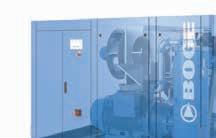





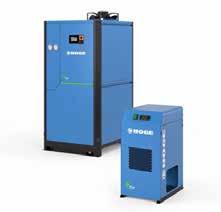
13 Manufacturers’ Monthly www.boge.net.au or (03) 5940 5913 High pressure piston and booster up to 40 bar(g) Oil free scroll compressors Medical, instrument, dental NEW generation series-4 screw compressors up to 160kW NEW full feature oil injected screw compressors 4-22kW For sales and service support contact your nearest BOGE partner NEW refrigerant compressed air dryer with sustainable, efficient and smart operation From 15-6,000 cfm
NEWS
Image: Zoetis
Zoetis purchases manufacturing site to expand livestock vaccine production capabilities.
Lithium-sulphur battery charging times could be slashed
New research from the University of Adelaide, shows that the next generation of lithium-sulphur batteries may be capable of being charged in less than five minutes, instead of several hours as is currently the case.
The University of Adelaide’s professor Shizhang Qiao led a team which examined the sulphur reduction reaction (SRR) which is the pivotal process governing the charge-discharge rate of lithiumsulphur batteries.
“We investigated various carbon-based transition

metal electrocatalysts, including iron, cobalt, nickel, copper and zinc during the SRR,” said Qiao.
Professor Qiao is chair of nanotechnology, and director, centre for materials in energy and catalysis, at the school of chemical engineering, an an ARC Australian Laureate Fellow.
“Reaction rates increased with higher polysulphide concentrations, as polysulphide serves as the reactive intermediates during SRR,” said Qiao.
The team designed a nanocomposite electrocatalyst, comprising a carbon material and cobalt-zinc (CoZn) clusters.
“When the electrocatalyst CoZn is used in lithiumsulphur batteries, the resulting battery achieves an exceptional power-to-weight ratio of 26120 W kgS-1,” said Qiao.
Current state-of-the-art lithium-sulphur batteries suffer from low charge-discharge rates, typically requiring several hours – typically from one to 10 hours – for a single full charge-discharge cycle.
“Our research shows a significant advancement, enabling lithium-sulphur batteries to achieve full
Cairns steel fabricator business bolstered with $720,000 manufacturing grant
A Queensland state Government manufacturing grant will enable Cairns manufacturer, CSF Industries to purchase shot blaster equipment that will expand the manufacturing capacity and grow the business, resulting in as many as 15 new jobs over the next five years.
CSF Industries services the local construction sector, offering steel fabrication, roofing services, coating and finishes, engineering, lifting and transport, and logistics products and services.
Minster for manufacturing Glenn Butcher said, “CSF Industries is a fantastic example of locally made innovation and hard work. The business has gone from strength to strength, since it was founded in 1979, and this $720,000 grant will ensure they can continue to thrive.”
Purchasing the blasting equipment has been made possible thanks to more than $720,000 in funding from Round 5 of the Queensland Government’s Made in Queensland (MiQ) program.
CSF Industries director Sean Adams said, “This grant has enabled us to purchase new equipment that will help us grow, adding new jobs and benefiting the local economy.”
This will allow the CSF Industries to reduce blasting times by 67 per cent, allowing CSF to expand to new markets, such as the shipbuilding sector.
“This new equipment will mean CSF can significantly increase capacity in its blast and paint facility, reducing blasting times by 67 per cent in the first year, and enabling the business to take on a greater volume of work, and reducing lead times for customer,” said Butcher.
Made in Queensland is a highly successful grant program, that has helped over 100 businesses across Queensland, over 5 rounds, creating and supporting over 6,000 jobs.
Cairns MP Michael Healy said, “On top of the new jobs created, this growth will also ensure 129 full-time equivalent roles are retained and offer new training and upskilling opportunities for six staff over the next five years.”
charge/discharge in less than five minutes.”
High-power lithium-sulphur batteries are used in various devices such as mobile phones, laptops, and electric vehicles.
The study is published in the journal Nature Nanotechnology and is the first comprehensive approach to tackling the problem of slow charge/ discharge rates in lithium-sulphur batteries.
This research has significant impact for scientists designing electrocatalyst materials and experts examining the reaction mechanisms of lithiumsulphur batteries.
“Our breakthrough has the potential to revolutionise energy storage technologies and advance the development of high-performance battery systems for various applications,” said Qiao.
The high-power capabilities of these batteries make them well-suited for applications requiring rapid charging and discharging, offering enhanced performance and reliability for both consumer electronics and large-scale energy storage solutions in grid applications.
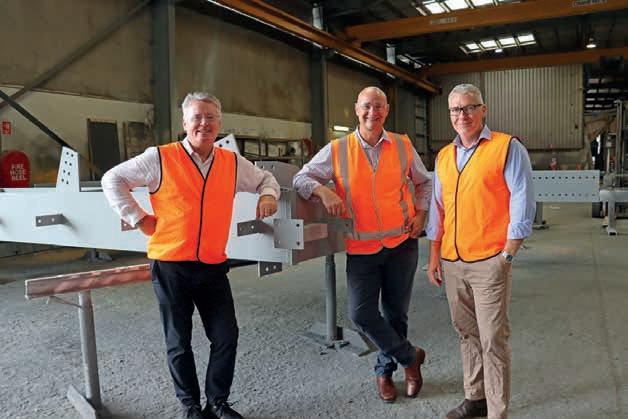
The Made in Queensland grant program forms part of the suite of measures implemented by the Miles Government which has seen over $207 million invested into Queensland manufacturers and support programs.
This investment, which has benefitted
businesses from the border, all the way to Far North Queensland, has created and supported over 7,000 jobs across the state.
By partnering with manufacturers, MiQ has also generated over $180 million in private sector investment, further proving that when we invest in growing our manufacturing sector, we grow the economy and create more jobs.
NEWS 14 Manufacturers’ Monthly May 2024
Image: Nischaporn/stock.adobe.com
Research from University of Adelaide reveals lithium-sulphur batteries could be charged in less than five minutes.
CSF Industries will purchase shot blaster equipment with a manufacturing grant to expand the business capabilities and offer new jobs.
CSF Industries
Image:
Toyota delivering first locally assembled hydrogen generator to Thiess
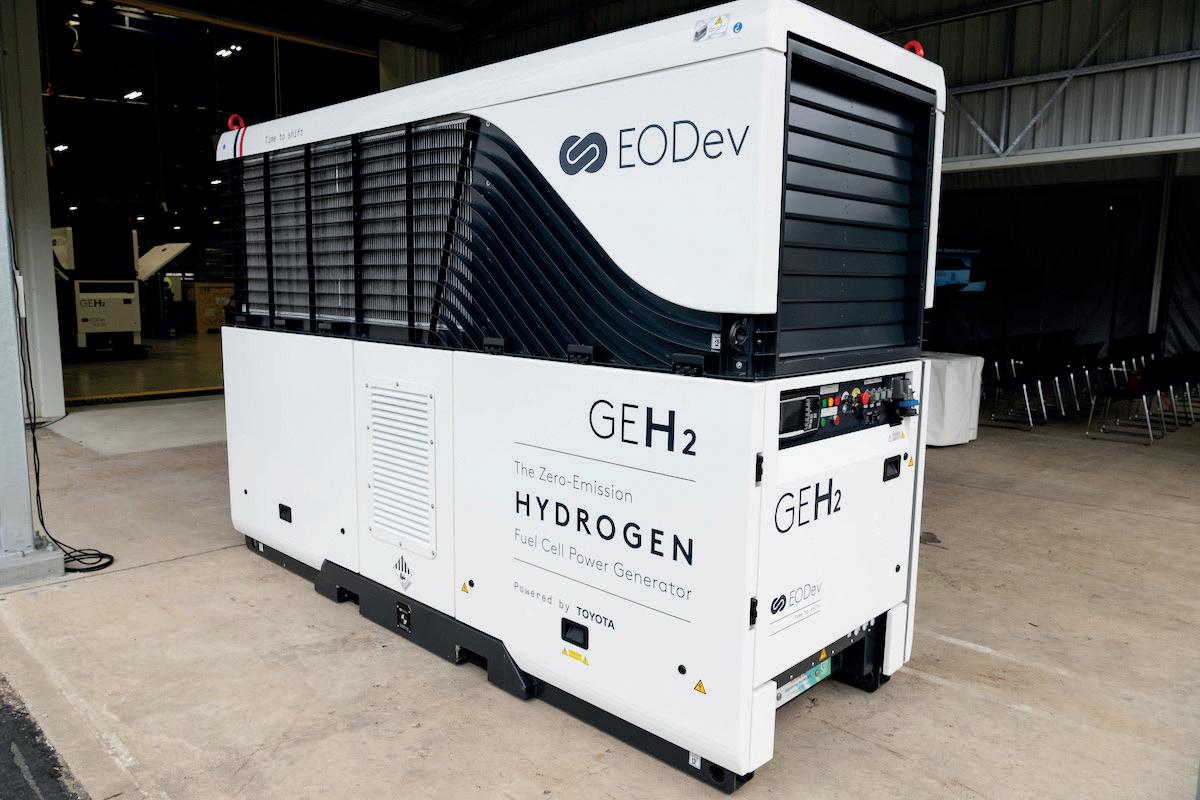
Toyota Australia has announced Thiess is set to be the first customer to take delivery of its locally assembled EODev GEH2 hydrogen fuel cell stationary power generator.
Toyota Australia president and chief executive officer Matthew Callachor made the announcement at a ceremony to celebrate the completion of the first GEH2 generator assembled at the company’s site at Altona in Victoria.
The 110kVA GEH2 power generator has been designed by EODev (Energy Observer Developments), a French company specialised in hydrogen solutions, with the support of Toyota Motor Europe and uses the same Toyota Fuel Cell System that powers the Mirai FCEV.
In October 2023, Toyota Australia announced
it was partnering with EODev to assemble the generators at Altona and make them available through its local retail partner Blue Diamond Machinery (BDM). It will also export units to New Zealand with Toyota New Zealand acting as the distributor in that market.
Speaking at the ceremony, Callachor said, “This is a great day for us at Toyota and all of our likeminded partners that have brought this important project to fruition as we aim to help drive towards a more sustainable future.”
Toyota has invested $3.27m in its facility at Altona to assemble up to 100 GEH2 generators over the next three years and aims to produce 28 in 2024 for customers largely in the mining, construction and events sectors.
“We are firmly committed to growing, and
investing in, the hydrogen economy here in Australia and I’m particularly pleased that Thiess is set to become our first customer for this innovative hydrogen fuel cell generator,” said Callachor.
Thiess Group executive – assets, autonomy and digital, Ramesh Liyanage said “We’re pleased at the prospect of being the first customer to take the locally-assembled hydrogen fuel cell generator unit and are excited to be partnering with Toyota once again, this time on cutting-edge technology that has the power to shape a more sustainable future for the world.”
The GEH2 power generator can also be used to provide emergency backup power for hospitals, commercial buildings and anywhere where stable power supply is required.
15 manmonthly.com.au Manufacturers’ Monthly
Image: Toyota
Toyota Australia delivering its first locally assembled hydrogen generator to Thiess.

Fortescue the first to use ammonia as a marine fuel
Fortescue achieves world’s first use of ammonia as a marine fuel in a dual-fuelled ammonia-powered vessel in the Port of Singapore.
Fortescue, with the support of the Maritime and Port Authority of Singapore (MPA), government agencies, research institutes, and industry partners, has successfully conducted the world’s first use of ammonia, in combination with diesel in the combustion process, as a marine fuel onboard the Singapore-flagged ammonia-powered vessel, the Fortescue Green Pioneer, in the Port of Singapore.
Chairman of Fortescue Dr Andrew Forrest said, “Australia and Singapore are nations for whom the seas are our lifeblood and Fortescue has seen firsthand the willingness of Singapore to lead the world in taking brave, innovative action to build green ammonia shipping.
The Fortescue Green Pioneer was loaded with liquid ammonia from the existing ammonia facility at Vopak Banyan Terminal on Jurong Island for the fuel trial.
In completing the fuel trial, the Fortescue Green Pioneer has also received flag approval from the Singapore Registry of Ships (SRS) and the “Gas Fueled Ammonia” notation by classification society DNV to use ammonia, in combination with diesel, as a marine fuel.
“The Fortescue Green Pioneer is proof that safe, technical solutions for ammonia power engines exist,” said Forrest.
Globally, ammonia is used in agriculture and industry. It is manufactured as a chemical by combining nitrogen from the air with hydrogen.
As a carrier for hydrogen, ammonia can be transported to demand centres for power generation and as a marine fuel in support of the energy transition. Several dual-fuelled ammonia vessels have been ordered by shipowners.
In preparation for the vessel’s operations in Singapore, Hazard Identification Study and Hazard and Operability Study workshops were jointly organised by MPA, Fortescue, Vopak, research institutes, and industry partners to identify the potential risks during fuel transfer and engine trials and to develop the necessary prevention, control, and mitigation measures.
MPA chief executive Teo Eng Dih said, “The safe conduct of this fuel trial supports the holistic assessment of the use of ammonia as a marine fuel, and the development of standards and safety procedures.”
The fuel trial was conducted over a period of seven weeks and included rigorous testing of the Fortescue Green Pioneer’s ammonia storage
systems, associated piping, gas fuel delivery system, retrofitted engines, and seaworthiness.
The tests were conducted in phases to ensure safe port operations and safety for crew members and engineers who have completed a series of rigorous training sessions since October 2023.
The five cubic metres (three tonnes) of liquid ammonia used for the fuel trial was supplied by Vopak using its existing infrastructure at the 10,000m3 Vopak Banyan Terminal on Jurong Island.
Vopak president and Singapore business unit Rob Boudestijn said, “Vopak takes great pride in our role as ammonia storage and handling specialists, facilitating the historic first-in-kind ammonia transfer for fuel purposes.”
As part of the risk management, extensive preoperations, safety checks and tests were conducted. A second tranche of three tonnes of liquid ammonia will be loaded for the Fortescue Green Pioneer to conduct further tests and trials over the next few weeks.
The Fortescue Green Pioneer started its journey towards becoming the world’s first ocean-going ammonia-powered vessel in 2022 when Fortescue successfully converted a four-stroke engine to run on ammonia, in combination with diesel, at its landbased testing facility in Perth, Western Australia.
16 Manufacturers’ Monthly May 2024
NEWS
In 2022, Fortescue converted a four-stroke engine in Perth to run on ammonia and diesel.
Image: Fortescue

AUKUS Chiefs of Navy to meet in WA for Defence Conference
Western Australia’s growing defence importance has been made clear, with the Chiefs of Navy for the three AUKUS nations to attend the Indian Ocean Defence and Security (IODS) conference
IODS will take place from 24-26 July 2024 at Perth Convention Centre.
Their visit to Perth will mark the first time the US, UK and Australian Chiefs of Navy have been in Australia at the same time.
Defence industry minister Paul Papalia said, “The rotation of nuclear-powered submarines through HMAS Stirling is a significant opportunity for our local defence industry and will support the diversification of our economy and create more jobs for Western Australians.”
From 2027, Perth will also be home to US and UK sailors who crew five nuclear-powered submarines on rotation through WA.
The biennial conference and international industry exhibition will highlight challenges and opportunities for international engagement, and discuss how industry may support diplomacy, defence and security policy in the region.
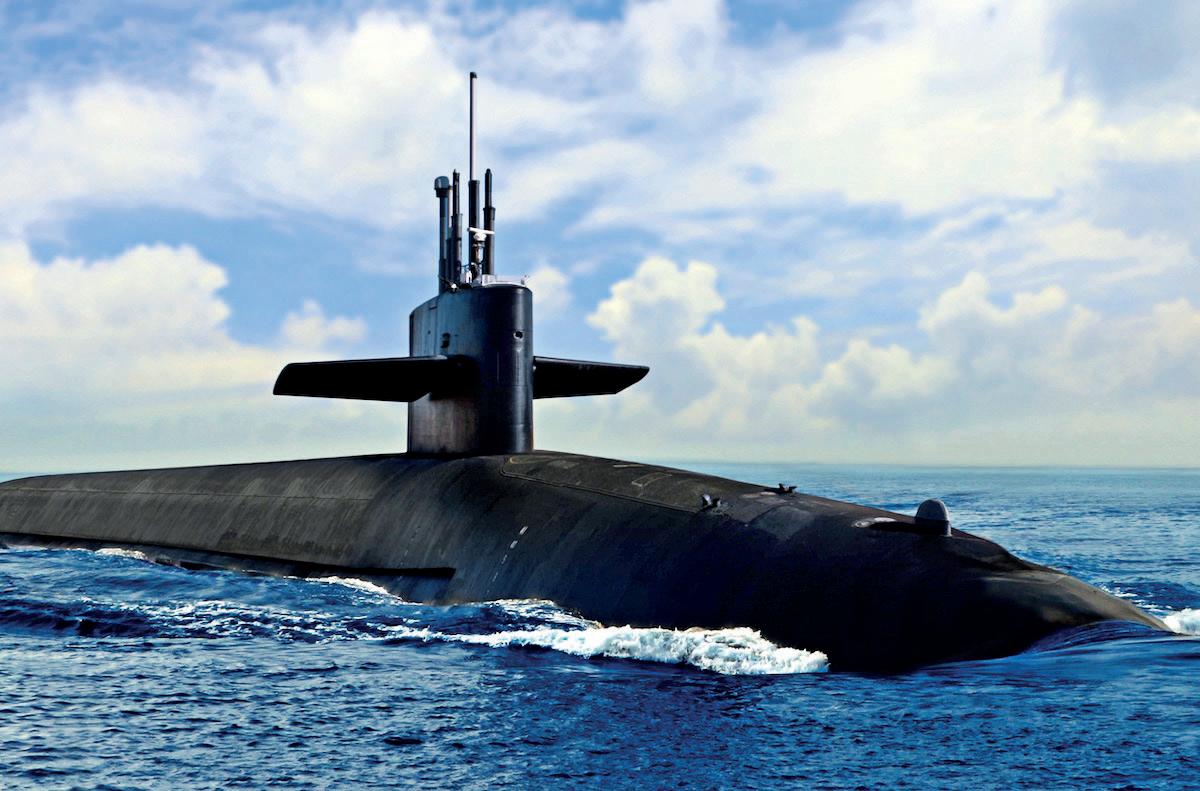
It will also feature events focused on defence career options, designed to attract a greater number of graduates and skilled professionals to the State’s growing defence industry.
In 2022, IODS saw over 600 attendees with many government, academic and defence industry representatives travelling from interstate and overseas.
New lithium project to boost Western Australia’s battery hub
The successful opening of the Mt Holland lithium mine and concentrator project will boost WA’s ability to produce lithium for battery manufacturing.
The Mt Holland lithium project consists of an open-cut mine and concentrator, located 110km southeast of Southern Cross in the Wheatbelt region, and a refinery currently being constructed in the Kwinana Industrial Area.
The Western Australia state Government has congratulated joint venture partners Covalent Lithium, Wesfarmers and Sociedad Química y Minera de Chile (SQM) on the successful opening
of the Mt Holland lithium mine and concentrator project.
The Mt Holland lithium project consists of an open-cut mine and concentrator, located 110km southeast of Southern Cross in the Wheatbelt region, and a refinery currently being constructed in the Kwinana Industrial Area.
Western Australia premier Roger Cook said, “This multi-billion-dollar investment in Western Australia will support hundreds of jobs and deliver a significant boost to our value-added industry.”
Mt Holland will produce 380,000 tonnes of

spodumene concentrate per year, which will be refined into 50,000 tonnes of battery-quality lithium hydroxide. This is enough to power around one million electric vehicles.
The state Government has played a key role in enabling this project by working with the joint venture partners to fund and deliver the Moorine Rock to Mt Holland road.
This $60 million commitment has improved road safety and freight efficiency, supporting the future growth of the mine.
Treasurer Rita Saffioti said, “Our $60 million commitment to support the Moorine Rock to Mt Holland road upgrades has been essential to getting this project off the ground. Last year when the Australian Government withdrew their funding, we stepped up to fill the gap they had left and make sure the project was delivered.”
With an expected cost of $2.6 billion, the project is supporting 1,000 jobs during construction and 350 jobs during operations.
Mines and petroleum minister David Michael said, “WA remains a globally significant battery and critical minerals processing hub and we are working hard to do all we can to further capitalise on this incredible opportunity.”
The Kwinana refinery is expected to deliver its first lithium hydroxide in early 2025.
17 manmonthly.com.au Manufacturers’ Monthly
Image: xiaoliangge/stock.adobe.com
The Indian Ocean Defence and Security conference will be held in Perth, Western Australia.
Image: razihusin/stock.adobe.com
The Mt Holland lithium project will boost Western Australian ability to product lithium for battery manufacturing.
New Ipswich TAFE centre to deliver skilled manufacturing workforce
A new state-of-the-art metal trades, manufacturing and robotics centre has officially opened at the TAFE Queensland Bundamba campus.
The new facility, funded through a $100 million ‘Equipping TAFE for our Future’ program, will feature autonomous robotics and support competitive skills in the advanced manufacturing sector, to meet growing workforce demand in the Ipswich region and across the state.
Revitalised spaces integrate all physical and virtual components for training including software and system integration, cybersecurity, cloud computing, autonomous robotics and assistive technologies, augmented reality, and virtual reality.
Member for Bundamba and minister for training and skills development, Lance McCallum MP said, “This facility is crucial for local workers to skill up for good, secure jobs, and it will further enhance advanced manufacturing excellence in Queensland.”
The $7 million Metal Trades, Manufacturing and Robotics Centre, incorporates a modern and flexible engineering training workshop including a machine shop, fitting area, light and heavy

fabrication and assembly area, robotic/Sub Arc Welding and Smart Factory.
The centre will support more than 380 students currently enrolled in engineering and manufacturing qualifications at the Bundamba campus including a broad range of courses offered through Free TAFE.
“Ipswich is growing rapidly and by 2025-26 around 1 in every 8 workers in the region will be employed in manufacturing,” said McCallum.
The new facility joins Advanced Manufacturing Skills Centres established at several TAFE Queensland campuses – including Cairns, Townsville, Bundaberg, and Eagle Farm.
Raytheon Australia opens Centre for Collaboration
Raytheon Australia’s new advanced Centre for Collaboration in southeast Queensland is now open, enabling opportunities for greater collaboration between the defence industry and the Australian Defence Force (ADF).
The minister for defence industry, the Hon Pat Conroy MP, officially opened the centre, which marks a significant investment by Raytheon Australia in its national infrastructure plan for a network of
purpose-built, secure facilities around the country.
Located in Cannon Hill, the Centre for Collaboration supplements the capabilities of the Centre for Joint Integration in Adelaide, South Australia, the Centre for Engineering in Sydney, NSW, and the Customer Engagement Centre in Canberra, ACT.
Raytheon Australia’s managing director Michael Ward said, “With 25 years’ experience supporting Australia’s Defence eco-system, we know how important it is for all parties to work together to support our national Defence.”

The new centre will serve as a central hub for electronic warfare, air traffic management, groundbased air defence, and integrated logistics, and will help facilitate collaboration with small and medium enterprises (SMEs) and Defence.
“The Centre for Collaboration enables our highly skilled workforce to work side-by-side with the ADF and our local industry partners to deliver tailored, world-leading capability for those in uniform that suits their requirements and Australia’s unique conditions,” said Ward.
With a focus on upskilling industry, the Centre for
Collaboration will also actively support Raytheon Australia’s innovative Capability Plus program, which provides pathways for SMEs to develop and enhance their capability to work with Defence.
The centre is also a practical investment in the growth of Australia’s industrial base.
“It is these opportunities for collaboration that enable us to continue our work as a true capability partner for Australia’s Defence, as we play our part in protecting Australia’s national security,” said Ward.
The Centre for Collaboration is a four-level, 7,800-square-metre facility that features software integration laboratories, technical workshops, training rooms, integration spaces, and adaptable office accommodation.
“This investment will not only support upskilling our future workforce, but also give them unique experience working on some of the most exciting and complex programs in the country,” said Ward.
The facility will be a base for Brisbane-based employees, including an expanding graduate cohort, as well as for uniformed and Defence personnel.
NEWS 18 Manufacturers’ Monthly May 2024
Image: oksix/stock.adobe.com
A new manufacturing and robotics centre has been opened at the TAFE Queensland Bundamba campus.
Image: Raytheon Australia
The new Centre for Collaboration will enable greater opportunities for collaboration between the defence industry and the Australian Defence Force.
Synergy’s Collie battery energy storage system underway
Construction has begun on Synergy’s Collie battery energy storage system, which will be one of the biggest grid-scale batteries in Australia when complete and will provide significant security to Western Australia’s main power system.
The battery, which will have a 500-megawatt/2000-megawatt hour capacity, will be funded as part of the Western Australian state Government’s commitment to expand battery storage throughout WA.
Energy Minister Reece Whitby said, “This is an exciting milestone for Western Australia’s decarbonisation journey.”
Synergy’s batteries are already playing a critical
role in meeting peak demand, with Kwinana Battery Stage One providing power to the South West Interconnected System since it was completed in May 2023.
“Synergy’s ground-breaking project is significant for the Collie community and will help local workers and families as Synergy seeks to exit coal-fired power by 2030,” said Whitby.
Kwinana Battery Stage Two is under construction and due to be completed in late-2024.
Collie-based earthworks and rehabilitation specialists Cardinal Contractors has been awarded the contract to complete site preparation earthworks for the battery facility, with up to 500 jobs expected
to be created at the peak of construction.
Collie-Preston MLA Jodie Hanns said, “Collie has been at the heart of WA’s energy system for decades and will continue to play an important role in the future.”
The battery is expected to be completed by the end of 2025.
“When complete, this battery will support reliability and more renewable energy on WA’s main electricity grid,” said Whitby.
Large-scale batteries provide long-term system stability and support the uptake of more renewables, with Synergy planning to build 3 gigawatt hours of storage by 2025.

19 manmonthly.com.au Manufacturers’ Monthly
Image: The Desert Photo/stock.adobe.com
Synergy’s Collie battery energy storage system will be one of the biggest gridscale batteries in Australia.
Gilmour Space partners with Frond Space Systems for MMS-1 satellite mission

Frond Space Systems, a New Zealand-based company specialising in deployable space technology and Gilmour Space Technologies, an Australian launch service and satellite provider, have signed a contract to supply a dragsail system for Gilmour Space’s MMS-1 satellite mission.
The MICRO dragsail system, developed by Frond, is a lightweight and compact device that can be deployed at the end of a spacecraft’s life to increase its drag and accelerate its deorbiting.
Head of satellites at Gilmour Space, Kody Cook said, “The new five-year deorbit requirement introduced by the US Federal Communications Commission (FCC) is a great step in the right direction for the responsible and sustainable use
of the space environment.”
The system aims to enhance space sustainability and reduce the risk of space debris, thereby ensuring compliance with regulatory requirements.
“Products like the MICRO dragsail system developed by Frond Space will be critical for meeting these requirements. It’s also a core part of our strategy to support the growth of the transTasman supply chain and start-up ecosystem as we continue to develop future platforms,” said Cook.
The Gilmour MMS-1 satellite mission, scheduled for launch in early 2025, will deploy a 100-kilogram class microsatellite to low Earth orbit.
Frond’s dragsail system will be attached to the satellite and activated after the completion of the mission.
Chief executive officer and co-founder of Frond Space Systems, Ben Taylor said, “This is a great opportunity to showcase our innovative deployable space technology and contribute to the responsible use of space.”
The contract reflects Gilmour Space’s commitment to the principles of responsible and sustainable space utilisation.
“We are proud to be part of the growing space industry collaboration across Australia and New Zealand and look forward to working with Gilmour Space and other partners in the region and beyond,” said Taylor.
NEWS 20 Manufacturers’ Monthly May 2024
Image: 3dsculptor/stock.adobe.com
Gilmour Space and Frond Space Systems have partnered to supply a dragsail system for Gilmour Space’s MMS-1 satellite mission.
BAE Systems and ASC selected to build AUKUS submarines
The Australian Government has selected BAE Systems and ASC Pty Ltd to build Australia’s new fleet of nuclear-powered submarines.
This selection comes as the latest significant development in the AUKUS trilateral security pact between the United States, the United Kingdom and Australia.
The news was announced by Australian deputy prime minister, Richard Marles, and UK defence secretary, Grant Shapps, marking the next step in the pathway for Australia to build and operate its own nuclear-powered submarines.
Under the AUKUS agreement, Australia and the UK will operate a common submarine of the future, incorporating technology from all three nations, based on the UK’s next generation design which BAE Systems is leading.
BAE Systems and ASC Pty Ltd will now bring together their complementary skills, expertise and capabilities under a collaborative arrangement in Australia, ultimately leading to the establishment of a long-term, incorporated Joint Venture.
“We’re extremely proud of our role in the delivery of this vitally important, tri-nation submarine programme. Our selection as a partner in Australia, alongside ASC, recognises our role as the UK’s longterm submarine design and build partner and as a
Australia, we look forward to working with ASC to develop an enduring, sovereign nuclear-powered submarine building capability for Australia.”
Woodburn explained BAE Systems has already made progress in the design and development of the next generation submarines in the UK, where more than 1,000 people are working on the SNNAUKUS programme and infrastructure investment.
“This latest step will ensure an integral connection between the UK design and the build strategy development in Australia as we work together to deliver next generation military capability as well as considerable social and economic value to all three nations,” said Woodburn.
Bae Systems states SSN-AUKUS will be the largest, most powerful and advanced attack submarines the Royal Navy has ever operated and will start to replace the Astute class, which BAE Systems is building at its site in Barrow-in-Furness in the North West of England, from the late 2030s.
Australia expects to deliver its first SSN-AUKUS submarine in the early 2040s.
The UK Ministry of Defence awarded BAE Systems almost $7.7 billion for the next phase of the SSNAUKUS programme in October.
The funding covers development work through
infrastructure investment in Barrow, which will see the site’s facilities double in size from 80,000 to 160,000 m2 by the late 2030s, as part of a multi-billion-pound programme, and continued recruitment to support the national endeavour.
BAE Systems has already increased its UK submarines workforce to 13,500 with plans to grow to around 17,000 at its peak to support SSN-AUKUS in the UK, as well as the Astute and Dreadnought programmes, providing a significant employment boost for the region.
The involvement of BAE Systems in Australia ensures an integral connection between the SSNAUKUS design led by BAE Systems in the UK and the development and maturation of the Australian build strategy.
BAE Systems has already delivered five of seven Astute class submarines to the Royal Navy in the UK, with the remaining two boats at advanced stages of construction at its shipyard in Barrow-inFurness.
The company is also designing and building the UK’s next-generation nuclear deterrent submarines, Dreadnought, with construction underway on the first three of four new boats.
BAE Systems state, in Australia, it has a long and proud heritage over 70 years providing advanced
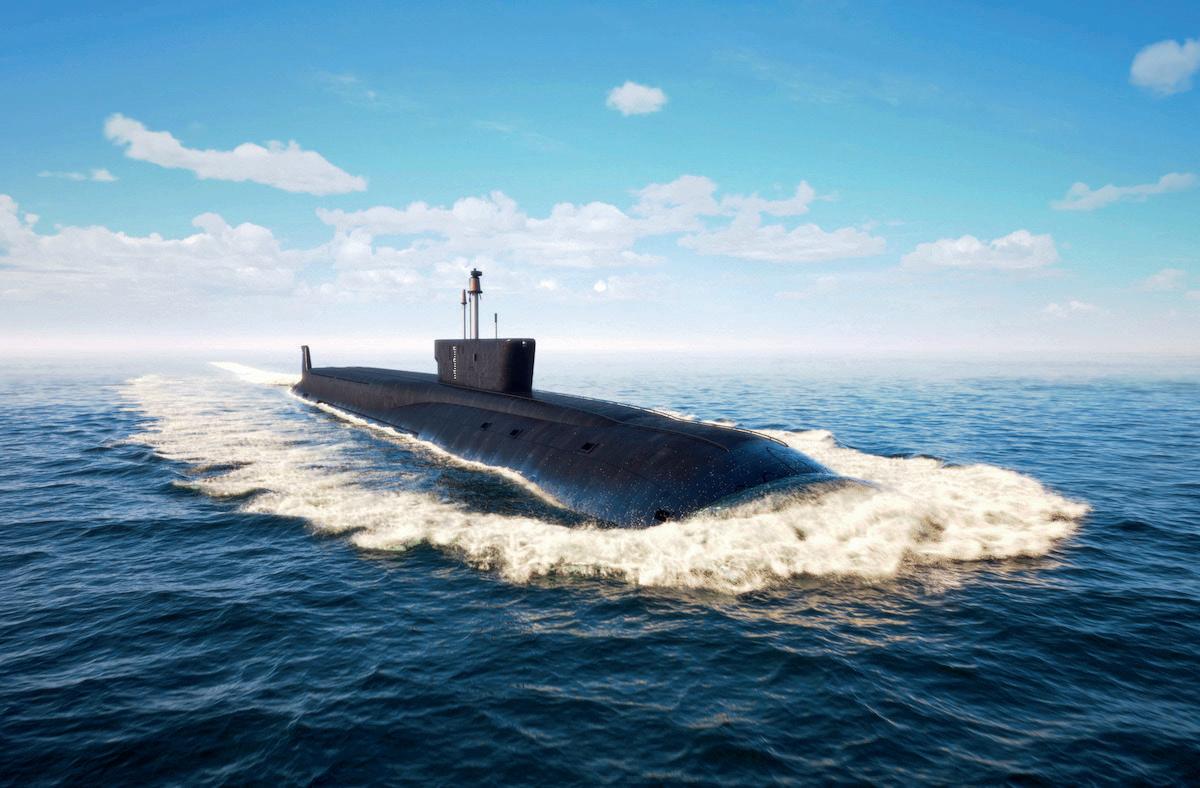
21 manmonthly.com.au Manufacturers’ Monthly
Image: alexyz3d/stock.adobe.com
The Australian Government has announced BAE Systems and ASC Pty Ltd will build Australia’s nuclear-powered submarines.
New manufacturing program to change construction of NSW public schools
Dozens of new and upgraded public school and preschool facilities will be built under an innovative new program that employs modern methods of construction to deliver high quality, sustainable schools in a shorter timeframe.
The Manufacturing for Schools program incorporates a range of cutting-edge construction techniques including digital technologies, offsite manufacturing, and on-site assembly of prefabricated elements to deliver high quality school buildings faster and at a lower cost than with traditional construction methods.
Deputy premier and minister for education and early learning Prue Car said, “The Manufacturing for Schools program represents the future – a major shift in our approach to designing, building, and delivering new schools and facilities for students and families in NSW.”
The program brings together industry professionals via a Manufacturing Partner responsible for connecting the supply chain to deliver the ‘kit of parts’ for new and upgraded schools across the state’s growth areas.
A contract has been awarded to The APP Group for the manufacturing partnership.
The Manufacturing for Schools program is expected to deliver cost savings of up to 20 per cent and slash construction time by up to 30 per cent.
“This future-focused strategy for sustainable and modern school building will ensure we can support teachers and students to achieve outstanding learning outcome,” said Car.
In addition to faster build times and reduced costs, the new program will reduce carbon emissions, material waste and water waste on sites in comparison with traditional construction methods.
“This is an economical, sustainable, and speedy solution that will deliver school facilities meeting the needs of our growing population, while getting better bang for taxpayers’ buck,” said Car,
The construction approach prioritises students and growing school communities, especially in high growth areas such as North-Western and SouthWestern Sydney.
There are plans currently under way to deliver more than 30 new and upgraded schools under
the Manufacturing for Schools program, including new primary schools at Sydney Olympic Park and Box Hill/The Gables, and high schools at Jordan Springs, Gregory Hills/Gledswood Hills, Schofields/ Tallawong, Leppington and Medowie.
The program is also being deployed to rebuild schools on the North Coast that were devastated by floods and deliver the majority of 100 public preschools across NSW at locations recently announced.
“In challenging times like natural disasters, the program’s speed and efficiency will ensure a swift rebuilding process, allowing us to reinstate the schooling routine for affected students and families promptly,” said Car.
At Oran Park Public School, a Stage 2 upgrade that opened for students to use on Day 1, Term 1, 2024, was installed on site in eight weeks. From design to completion, the project took a total of 13 months.
Manufacturing in a controlled factory environment, combined with the shorter build times, also ensures less noise and overall disruption to student learning for projects on existing school sites.

NEWS 22 Manufacturers’ Monthly May 2024
Felix Mizioznikov/stock.adobe.com
Image:
The Manufacturing for Schools program is designed to deliver school buildings faster and at a lower cost.
$4.76m in funding to boost electric vehicle rentals and second-hand car market

Australian Renewable Energy Agency (ARENA) has announced $4.76 million in funding from the Driving the Nation Program to Europcar Mobility Group for the electric rental vehicle and charging infrastructure rollout’ project.
Europcar Mobility Group, one of the largest vehicle rental companies in Australia, will install 256 chargers across at least 41 sites around Australia, including airports, metropolitan hubs and regional locations, to support the deployment of around 3,100 passenger electric rental vehicles over the next three years.
The project will make electric vehicles more accessible to thousands of individual and business customers for rent at price points comparable to fossil fuel equivalent vehicles, introducing more Australians to EVs who may be reluctant to give them a go.
Rental businesses are in a unique position to aid Australians with electric vehicle uptake.
ARENA chief executive officer Darren Miller said, “It’s promising to see that Australian EV sales hit record numbers in 2023, but it’s clear that much more needs to be done to see EV sales overtake
vehicles. This includes providing Australians with access to more affordable makes and models of electric vehicles, which this project does.”
Europcar Mobility Group intends to operate the EVs for up to two years across a range of rental service offerings, before reselling the vehicles in the second-hand car market through an established dealer network.
Europcar Mobility Group’s project, while helping to reduce emissions in the fleet and rental car market, will also help to get a wider range of EVs into the second-hand market and that’s a win-win for both the company and Australians looking to purchase. I hope to see this replicated by other rental car companies.”
Europcar Mobility Group will also be integrating EVs and charging infrastructure into its broader service offering, assisting its business customers to meet their carbon emissions reduction targets.
Airport sites include major city airports –Melbourne, Canberra, Brisbane, Adelaide, and Perth, and will be prioritised in the rollout as critical short-term rental locations. More airport sites are expected to be added to the footprint over
Europcar Mobility Group managing director for Australia and New Zealand, Benoit Gare said, “Europcar is proud to be leading the charge in the transformation of Australia’s rental car industry toward a sustainable, electric future by educating drivers, making it easier and more affordable to make the switch to EVs and providing a premium customer experience along the way.”
Europcar Mobility Group is partnering with Ampol to procure, install and operate the 256 electric vehicle chargers with smart charging capabilities across 41 Europcar-operated sites Australia-wide. Ampol Executive general manager, international and new Business, Brent Merrick said: “Our partnership with Europcar Mobility Group is a key example of how Ampol is looking to support our customers with charging solutions including where they invest in their own infrastructure to electrify their fleets.
Since 2015, ARENA has invested over $150 million to zero-emissions vehicles, including public charging, vehicle to grid trials, innovation in charging, hydrogen refuelling and fleet decarbonisation.
23 manmonthly.com.au Manufacturers’ Monthly
Europcar
Europcar Mobility Group has been awarded funding under the Driving the Nation Program to aid Australia’s shift to electric vehicles. Image:
Australian manufacturers investing in GenAi to boost productivity
Rockwell Automation has released it’s smart manufacturing report, stating Australian manufacturers are investing in GenAi to boost productivity.
The company’s 2024 State of Smart Manufacturing Report (SoSM) surveyed more than 1,500 manufacturers across 17 manufacturing countries including 88 businesses in Australia and New Zealand.
Of the manufacturers in Australia and New Zealand in the SoSM survey, 45 per cent reported the wide adoption of GenAI and Causal AI with another 34 per cent planning to invest in the next 23 months.
“Australian companies are already embracing GenAI and Causal AI with even wider adoption expected,” said Anthony Wong, regional director, south pacific, Rockwell Automation.
The report noted GenAI and Causal AI implementation in Australia and New Zealand is higher than in Canada (37 percent), UK (41 percent), and the US (43 percent).
According to Rockwell, it is imperative for Australia to embrace technologies like GenAI and Causal AI as the country is getting older, faster.
Additionally a recent McKinsey study found that GenAI has the potential to increase Australian labour productivity by 0.1 to 1.1 percentage points a year through 2030.
Tech Council of Australia (TCA) has predicted GenAI could deliver between $45 billion and $115 billion in value to the Australian economy by

2030, depending on the pace of implementation. Companies are using GenAI to develop and test products in a virtual immersive environment.
According to MIT Sloan School, the Industrial Metaverse is being constructed with existing tools, including digital twins, artificial intelligence, high-fidelity simulations, extended reality, blockchain, 5G connectivity, and cloud and edge computing.
“In the Industrial Metaverse, machines, factories, grids, and systems are mirrored in the virtual world. This enables teams to collaborate in real time regardless of distance,” said Wong.
This will lead to manufacturing being localised and more resilient supply chains.
Wong said, “Taking this to the next level will need cloud technology, AR, and VR systems, blockchain, AI, and other technologies to come together.”
The Rockwell Automation smart manufacturing report the industrial metaverse sector is set for phenomenal growth.
In the next 12 months, 50 per cent of the Australian and New Zealand companies in the SoSM survey, plan to invest in the Industrial Metaverse.
Federal Government announces $83m investment to deliver defence infrastructure
The Federal Government has announced it will invest over $83 million to deliver defence infrastructure upgrades at HMAS Stirling in Western Australia.
The investment will be spread across 32 projects at Stirling, including remediation and maintenance of the Parkes Wharf, tunnel maintenance and building refurbishments.
The Federal government state ensuring the Australian Defence Force has fit-for-purpose facilities and infrastructure is critical for its capability and preparedness.
Assistant minister for defence, the Hon Matt Thistlethwaite said, “Ensuring our Defence sites
are equipped to meet operational and capability requirements, now and in the future is essential to keeping Australians safe.”
Specifically, the government states HMAS Stirling is vital to Australia’s national defence, supporting Royal Australian Navy vessels based in the West.
From 2027 Submarine Rotational Force – West will be established at Stirling, in the lead up to it becoming home to Australia’s future conventionallyarmed, nuclear-powered submarines.
Work through the Defence Estate Works Program is expected to create more than 150 local jobs, providing significant opportunities for local trades, construction, and other businesses.
“These projects, to be delivered by local businesses in the Perth region, are supporting local jobs and creating opportunities in the trades and construction industries,” said Thistlethwaite.
This is an addition to the $8 billion investment allocated by the Federal Government, which will see further upgrades to HMAS Stirling over the next decade in preparation for the Submarine Rotational Force-West.
The investment plays a role in AUKUS developments, since the AUKUS announcement in March 2023, HMAS Stirling has welcomed two visits from conventionally armed, nuclear-powered submarines of the United States.
NEWS 24 Manufacturers’ Monthly May 2024
Image: ake1150/stock.adobe.com
Rockwell Automation reports Australian manufacturers are adopting GenAI, boosting productivity; potential $115bn value by 2030.
Mackay manufacturer receives $500,000 grant to purchase new equipment and generate jobs
Key Solutions Group, a manufacturer based in Mackay, has been granted $500,000 under the Manufacturing Hubs Grant Program (MHGP).
This funding will enable the group to procure new equipment and create employment opportunities for eight individuals.
The Queensland state Government manufacturing grant will enable Key Solutions Group to purchase and install two Motoman AR1440 series welding robots, Power-Trac seam finders/trackers and rotary screw compressors.
The purchase of this equipment will expand its manufacturing capacity and grow the business, resulting in eight new jobs and upskilling 28 current employees.
Minister for Manufacturing, Glenn Butcher said, “Every time we see a Queensland manufacturer take advantage of these grant programs, I know that it’s a step in the right direction for creating a more resilient and robust manufacturing sector.”
Key Solutions Group specialises in pipe welding, repairs and component manufacturing and is a major service provider to Mackay’s critical mining and agriculture sectors.
“The robotic manufacturing facility project will be a

key ingredient in our business growth path and we’re looking forward to bringing in more customers with a broader product and service offerings,” said Key Solutions Group managing director, Frank Attard.
This purchase of this new equipment was funded through Round 3 of the Queensland Government’s Manufacturing Hubs Grant Program.
“We have helped so many businesses throughout Queensland, just like Key Solutions Group, with leaders who can see an opportunity to expand their factory’s capabilities, an opportunity to secure more clients and grow their business,” said Butcher.


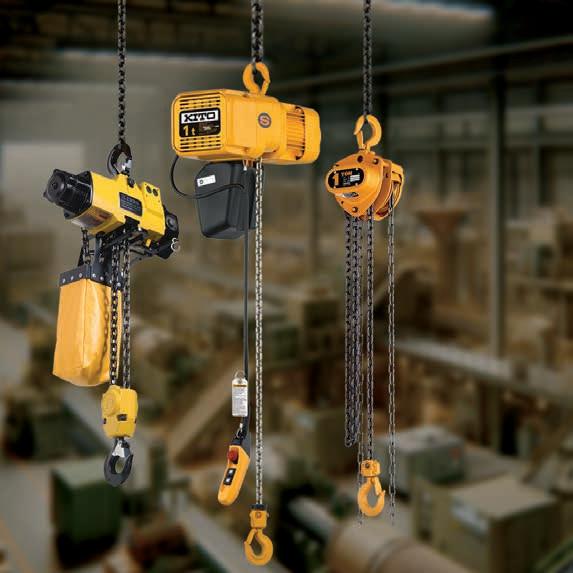
According to Julieanne Gilbert, member for Mackay, the equipment is expected to reduce production costs by 30 per cent and generate private sector investment of more than $1.2 million.
The Manufacturing Hubs Grant Program is a funding program that has helped 63 projects across Queensland, over 3 rounds, creating and supporting more than 1,400 jobs.
MHGP forms part of the suite of measures implemented by the Queensland Government, which sees more than $207 million invested into Queensland manufacturers and support programs.
25 manmonthly.com.au Manufacturers’ Monthly
Image: Wosunan/stock.adobe.com
The grant should allow Key Solutions Group to buy equipment, expand capacity, create eight jobs, and upskill 28 employees.
MANUFACTURER FOCUS
A homegrown UAV manufacturer
Dario Valenza, the founder of Carbonix, an unmanned aerial vehicle (UAV) manufacturer based in Sydney, recently shared insights into the company’s transition from a startup to achieving commercial success. Manufacturers’ Monthly reports.
Dario Valenza’s ventures in manufacturing did not begin with producing UAVs, but instead with yacht racing and yacht design.
Before the inception of Carbonix, Valenza progressed from harbor racing to participating in round-the-world races and the America’s Cup.
Throughout this stint, he recognised the significance of data collection and analysis in enhancing performance.
Throughout his experience in yacht racing, Valenza obtained expertise which encompasses testing, engineering, and optimising carbon fibre composites for aerodynamics and performance.
Valenza identified that he could apply his knowledge to commercial applications by leveraging aerial data.
“I saw the opportunity for aerial data being valuable to commercial applications for people being able to see how their assets are behaving from the situation on the ground,” he said.
“I noticed a gap in terms of a platform and airframe capable of carrying a camera or scanning
payload over long distances economically at scale.”
Combining his insights into data analysis and carbon fibre composites, Valenza embarked on developing an efficient airframe to address this need.
This initiative catalysed the inception of Carbonix, as he sought to utilise advanced technology to solve real-world challenges in aerial data capture.
The Carbonix story
Carbonix was founded in 2012, although the initial years were focused on laying the groundwork for the company.
“Initially, the focus was heavily centred on carbon fibre composite technology,” said Valenza.
“The team set up a workshop and meticulously optimised processes, including resin ratios and cure time, to enhance production capabilities.”
“Subsequently, they established an avionics department to handle the electronics aspects, integrating various avionics, custom boards, software, and user interfaces.”
It wasn’t until around 2016 that serious testing commenced, with a more significant push towards commercialisation around 2018-2019.
The next phase involved operations, where extensive test flying was conducted, accumulating tens of thousands of hours.
“Collaboration with regulatory authorities, such as the Civil Aviation Safety Authority (CASA), was pivotal in developing the regulatory framework for OEM drone manufacturers conducting test flights,” said Valenza.
“Then as we started commercialising, those test flights morphed into customer flights.
“We had a design stream, a manufacturing stream, an operation stream and a regulatory stream.”
Over the past few years, Carbonix dedicated themselves to securing long-term contracts with customers, progressing from initial proof of concepts to integrating the technology into their regular operations.
This journey involved assisting their customers in

Image: Phillip Hazell/Prime Creative Media
Valenza transitioned from yacht racing, recognising data’s significance, to innovating aerial data capture with Carbonix.
“ ”
The team set up a workshop and meticulously optimised processes, including resin ratios and cure time, to enhance production capabilities.
understanding regulatory requirements, providing necessary training, and demonstrating the value of the technology in their business operations.
Throughout this period, Valenza noted changes in the industry, which compelled Carbonix to adapt.
“We started out, we’re pretty early in the game in terms of you know, the regulation wasn’t there, the supply chain wasn’t there, we had to do a lot of reinventing the wheel for ourselves,” he said. Initially, Carbonix had to innovate extensively due to the lack of established frameworks and suppliers.
However, with the development of organisations like the Australian Association of Unmanned Systems, the ecosystem had become more robust.
Carbonix now sources electronic speed controllers and GPS units locally, emphasising Australian content in their supply chain.
“A substantial portion of our supply chain incorporates Australian content, including the autopilot itself. We utilise a product known as the Cube, which also originates from Australia,” said Valenza.
As the industry matured, Carbonix found differentiation in their approach to operations, emphasising stringent procedures, quality assurance, and engineering standards.
This focus has earned them trust from both regulatory bodies and customers.
“I think a point of difference for us is the platform and the way we implement it into an operation,” said Valenza.
“Within our procedures, our quality assurance, level of engineering, last standing with our customers; we’ve been able to narrow down what we do.”
Manufacturing capability
Carbonix’s primary manufacturing facility is in Artarmon, in Sydney’s North.
Inside the manufacturing space, the company

A
hosts all critical equipment for in-house composite production, including layup tables, curing ovens, mould-making facilities, and dust extraction booths.
Furthermore, they operate an electronics prototyping lab where soldering and crimping tasks are conducted, facilitating smooth integration within their operations.
“The facility is essentially divided into two halves: one serving as the engineering office and the other dedicated to manufacturing,” said Valenza.
Carbonix also has a variety of equipment for testing both electric and petrol motors, along with facilities for testing fully strapped-down or parked aircraft.
Despite their comprehensive in-house capabilities for manufacturing, assembly, prototyping, testing, and integration, their capacity is somewhat limited by space and personnel constraints.
“We can build maybe two aircraft a month out of this facility. But with Quickstep, we’re already up to one a week and there’s a possibility to move to two a week when required,” said Valenza.
“Recently, we announced that we put in a notice of 40 Volanti drones last week, which will be delivered before July.”
Challenges
Whilst navigating the drone industry, Carbonix has encountered various obstacles, particularly in

27 manmonthly.com.au Manufacturers’ Monthly
Both drones possess the capacity for extended-range aerial operations.
unique aspect of Carbonix’s drones is their capability for vertical takeoff.
Image: Carbonix
Image: Carbonix
MANUFACTURER FOCUS
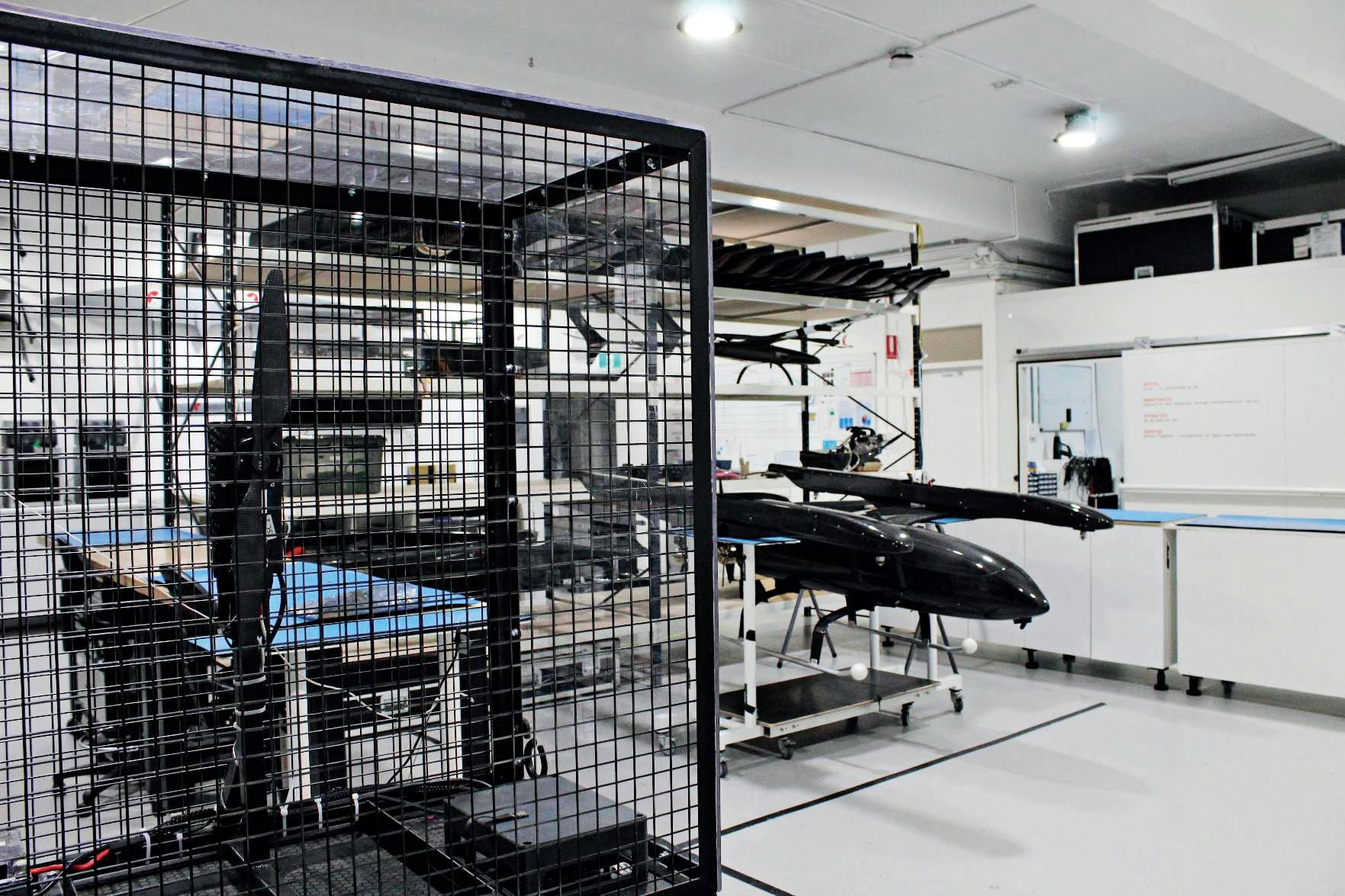
managing the “hype cycle” that has characterised the sector’s evolution.
While the drone market once appeared crowded due to widespread experimentation, many solutions fell short of expectations, leading to customer disillusionment.
“We’ve had customers that tried different solutions, and they sort of became disillusioned, because the technology was just not there yet,” said Valenza.
Carbonix has since distinguished itself by being transparent about its developmental stages and focused heavily on delivering on promises.
“We’re always very open about this as where we are in our development path,” said Valenza.
“While there are ongoing tasks ahead, we can fulfill commitments today and have plans for the future. One of our distinguished traits lies in our commitment to delivering on our promises.”
Moving forward, Carbonix sees challenges in reducing approval times, largely dependent on regulatory bodies like CASA.
“We’re hoping regulators will move to increasing delegation, essentially moving away from the current scenario where each approval is treated as a separate process, and instead implementing more standardisation,” said Valenza.
“While our country is much more accommodating compared to many other jurisdictions globally, with a pragmatic regulator, the time factor in getting things approved can be inconvenient.”
Moreover, the company aims to address time constraints further by streamlining their manufacturing processes, automating approvals,
and delegating tasks to expedite operations.
Carbonix envisions enhancing unit economics by transitioning from a one-pilot-one-aircraft model to a remote one-to-many setup.
This entails integrating more automation into drone systems, enabling independent flight with intelligent on-board decision-making logic, and establishing frameworks for remote operation of multiple drones simultaneously and safely.
“The challenge lies in coordination. Specifically,
there exists a highly effective and resilient system for ensuring manned aircraft can operate without colliding,” said Valenza.
“Introducing drones into this environment adds a layer of complexity, necessitating consideration of ground and air risks.
“It’s imperative to move away from a casual hobbyist mindset when operating drones and instead recognise them as aircraft deserving of the same level of caution and regulation.”
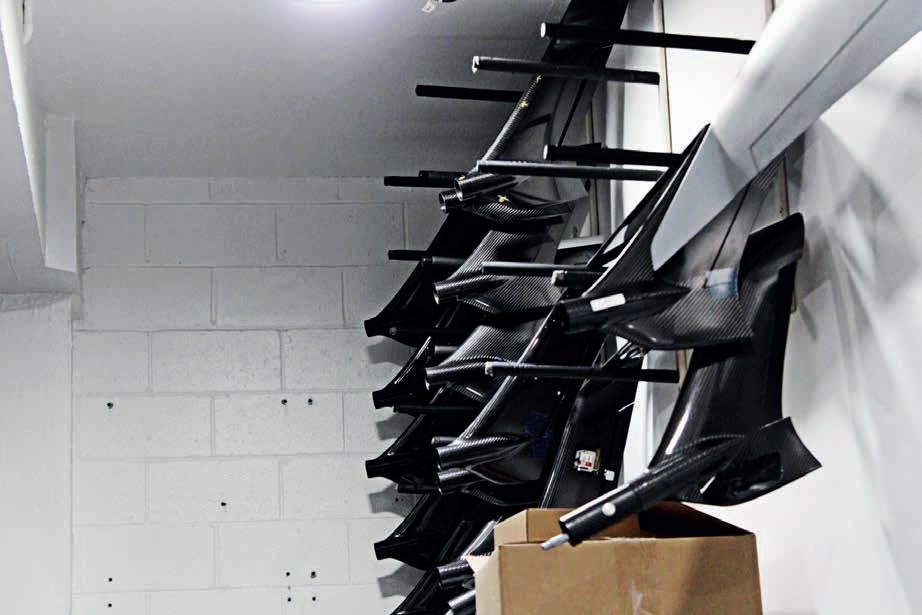
28 Manufacturers’ Monthly May 2024
Carbonix’s Artarmon facility houses equipment for composite production, electronics prototyping, and aircraft testing.
Carbonix aims to transition to remote operation, integrating automation for efficient, simultaneous flight of multiple drones.
Phillip Hazell/Prime Creative Media
Image:
Phillip Hazell/Prime Creative Media
Image:
The workforce
The Carbonix team consists of 20 individuals, with expertise spanning aeronautical engineering, mechanical propulsion, manufacturing, operations, management, and sales.
As the company expands its manufacturing capabilities, partnerships with firms like Quickstep have been forged to handle airframe production, allowing Carbonix to focus on prototyping and design validation before passing production to partners.
“We don’t need to scale manufacturing to meet volume demands. Instead, we bring the aircraft to a stage where it’s fully prototyped and proven,” said Valenza.
“Accompanied by a comprehensive build book, this provides clear instructions to partners on assembling the aircraft.”
In terms of talent acquisition, Carbonix emphasises transparent communication of company values, prominently displaying them as guiding principles for decision-making.
“We have deliberately spelt out our values, by literally writing them on the wall,” said Valenza.
“These values serve as a guiding filter for every decision made within the company.
“Engaged in exciting and meaningful work, our team members are drawn to our culture. We embrace a work hard, play hard ethos, where we come together not only to meet demands but also to celebrate our achievements afterward.”
Talent is sourced through various channels, including word of mouth, industry referrals, and recruitment from different sectors.
“Initially, and continuing to this day in the composites domain, much of our expertise has originated from America’s Cup skilled workshop builders,” said Valenza.
“This expertise has been augmented by individuals with drone experience, sourced from military or commercial backgrounds, who contribute their knowledge and skills to our team.
“Together, these diverse backgrounds and experiences merge into a cohesive whole, forming a dynamic melting pot of talent.”
The company has also sponsored international talent, recruiting individuals from the US when necessary.
“If you differentiate the workplace from the rest of the industry, and you make it desirable, then you have no shortage of applications, and then it’s a matter of choosing the cultural fit,” explained Valenza.
The drones
Carbonix manufactures two flagship drones, the Volanti and the Ottano X.
The Volanti, Carbonix’s foremost electric fixed-
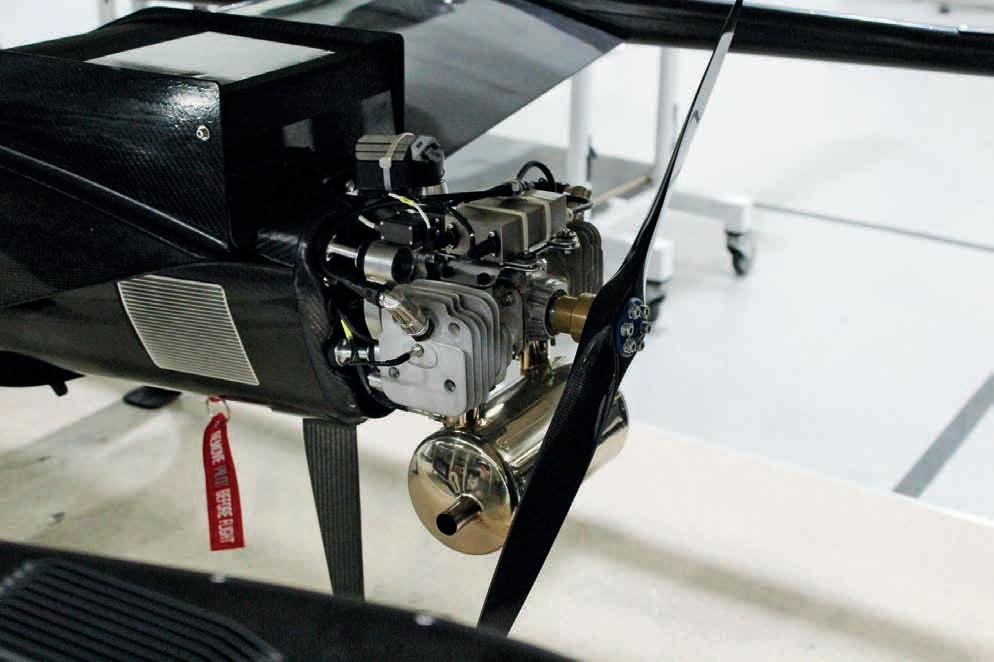
wing UAV, boasts advanced features and a 3.6m wingspan. It is a VTOL Power Lift design, facilitating rapid aerial surveys over expansive and challenging landscapes with precision.
Equipped with various payload sensors such as photogrammetry, ISR, and multi-spectral options, the Volanti offers customisation to meet specific requirements or integrate with existing payloads.
Over time, the Carbonix team has worked to optimise and re-engineer the Volanti, ultimately to ensure maximum performance, user-friendliness, and commercial viability.
The hybrid-powered Ottano X, another fixed-wing UAV, shares similar traits.
With a wingspan of 6.5 meters and VTOL Power Lift design, it excels in swift aerial surveys over expansive and challenging terrains.
It can autonomously carry payloads of up to 5kg for eight hours, which distinguishes it from competitors.
Range being key to bringing down the unit cost of aerial surveys, Carbonix drones offer a safer, more economical, and much more environmentally friendly alternative to manned helicopters and small planes.
The drone can be integrated with multiple sensors such as high-end LiDARs and 150mp+ photogrammetry sensors for precise imagery.
Both drones were manufactured to address a gap in the drone market, which was recognised by Carbonix’s founder.
Valenza explained to Manufacturers’ Monthly that historically, there have been few commercial options available for aerial data surveying.
“In the past, the choices were limited to satellites or crewed aircraft,” he said.
Drones, however, were not being utilised for this function, which requires an aircraft to be fitted with sensors, cameras, or other data collection devices and to be capable of long-range flight.
Additionally, Carbonix developed their drones with vertical take-off and landing capabilities, which as Valenza claims, is a point of difference.
“When I began Carbonix, multirotors were just beginning to become a commonplace item, transitioning into a commoditised market,” he said.
“Multirotors, such as quadcopters and octocopters, are straightforward to deploy due to their vertical takeoff capability and intuitive flight controls.
“However, their range is inherently restricted due to the physics governing their flight.”
The aim for Carbonix was to bridge the gap between manned aircraft range and drone practicality, necessitating an airframe capable of carrying significant payloads for extended periods.
“Although the concept isn’t novel, our achievement lies in simplifying it to operate independently and redundantly from the horizontal propulsion system,” said Valenza.
“We underwent an engineering process to ensure drone functionality, reliability, and robustness, seamlessly integrating it with the overall design.”
The future
Carbonix’s current plan revolves around scaling operations. The company has established a presence in sectors such as mining, powerlines, and defence, with a significant foothold in the US market.
In the US, Carbonix operates a fleet of aircraft through Argent Tech, engaging in activities like bushfire prevention, agricultural surveying, and infrastructure inspection.
Looking forward, Carbonix aims to expand both domestically and internationally while concurrently refining its product line.
The company also intends to integrate additional layers of automation to enable remote, one-tomany operations.
This strategy entails not only technological advancements but also regulatory adaptations and ensuring customer readiness.
As these elements progress, Carbonix’s focus will shift from market creation to optimising unit economics through increasing drone automation.
29 manmonthly.com.au Manufacturers’ Monthly
Image: Phillip Hazell/Prime Creative Media
Carbonix drones offer cost-effective, safer, and eco-friendly aerial surveying compared to manned aircraft.
ALUMINIUM MANUFACTURING
Success through collaboration
From humble beginnings in a small factory based at Erina, New South Wales, to prominence in the commercial building sector, PCW Commercial Windows’ (PCW) story is intertwined with a commitment to quality and its pivotal partnership with Capral Aluminium. Manufacturers’ Monthly reports.
PCW, under the direction of Leigh Spinks, has a rich history dating back to 2001 when Spinks joined Palmer Aluminium as an estimator.
“Palmer Aluminium, which is the parent company of PCW Commercial Windows, was headed by Trevor Palmer and was very successful shortly after its inception through the 1990’s” said Spinks.
“It didn’t have a lot of competition back then, but it had a good reputation.”
In 2004, Leigh Spinks entered a partnership with Trevor Palmer’s business, aiming to eventually assume ownership upon his retirement, which occurred in 2007.
Consequently, he became the outright owner of what was then known as Palmer Commercial Windows and Doors, retaining the name in honour of Trevor Palmer.
Since then, the company has experienced significant growth, moving from a small team of eight or nine people at Erina, to a workforce of 25 employees, with a peak of 40 prior to the COVID-19 pandemic.
In 2011 PCW bolstered its depth and experience when Peter Smith entered partnership with Spinks, and the current entity known as “PCW Commercial Windows” was born.
“Outgrowing our Erina location, in 2012 the decision was made to relocate to Somersby, to a larger factory positioned closer to the forefront of PCW’s client requirements. A more sensible position logistically,” said Spinks.
Peter Smith retired from PCW at the end of 2021, ending a successful partnership with Spinks and passed over some of his ownership to experienced PCW members in Ross Farrelly and Jay Atkins.
“It’s been an exciting run that’s flown by, that’s for sure.” said Spinks.
The work
Specialising in commercial window and door solutions, PCW services builders across a wide geographic area, from south of Sydney to the north of Newcastle and the Central Coast.
“In those regions, I think that we are one of the preferred suppliers of commercial windows,” said Spinks.
“We’ve completed many projects in remote locations, and we’re currently doing jobs as far south as Goulburn, and we’ve gone as far north as Coffs Harbour, we’re happy to do remote projects for the right builder.”
Their projects range from hospitals and schools to car showrooms and industrial buildings, with a focus on high-volume commercial construction.
Additionally, they handle high-end residential projects and multi-story apartment buildings, catering to builders who value reliability, quality products, adherence to construction schedules and Australian Standards.
“We primarily focus on high-volume projects and produce a wide range of items including bi-fold doors, glazed hinge doors, auto entry

strut, sliding doors, awning windows, servery windows and glass roofs,” explained Spinks.
“Our versatility allows us to tackle various tasks with ease.”
“We don’t try and stick into one particular lane, but if builders have got something they need us to sort out, we do it.”
A point of difference
What sets PCW apart in the industry is their commitment to early engagement with builders, providing clear and comprehensive quotations and tender submissions.
This proactive approach has earned them a reputation as a reliable and trustworthy partner in the construction sector.
“I think one of the reputations PCW Commercial Windows has built over the years is early engagement – we get a lot of compliments about the way we construct our quotations and tenders and our efficient project management style,” said Spinks.
Builders frequently approach PCW, seeking assistance in resolving issues. Once engaged in a project, builders often turn to PCW for guidance on various aspects such as staging, technical details, ideas, and cost-saving measures.
Team dynamics
PCW’s success is also attributed to their skilled team, which includes qualified tradespeople in management roles, experienced fabricators, and dedicated installation teams.
They prioritise training and development, with a focus on bringing apprentices through the ranks to ensure a well-rounded skill set across the workforce.
“Through installation, we make sure we’ve appointed experienced and committed site leaders, who know how to get the job done right the first time,” said Spinks.
“We have been very proactive in bringing apprentices through over the last few years.”
“We’ve currently got three apprentices doing various qualifications in glazing or joinery, and our hope is for them to progress and rise into future industry leaders.”
A pivotal factor in PCW’s success lies in their strategic alliance with Capral, a leading supplier of aluminium products.
30 Manufacturers’ Monthly May 2024
PCW’s success stems from their skilled team, emphasising apprenticeship development and strategic partnerships like Capral.
Being able to assure our clients that all the aluminium sourced from Capral adheres to ethical standards often receives positive feedback, particularly from clients concerned with certifications like Green Star. “ ”
Partnership with Capral Aluminium
One of the key players in PCW’s success story is Capral, their longstanding supplier of aluminium.

PCW has been sourcing aluminium from Capral for over 20 years and has recently transitioned to Capral’s LocAl offering, which provides aluminium produced using environmentally friendly methods.
“I don’t go anywhere else. I’ve been in business myself for over 20 years and I can tell you now, they’ve been my mainstay,” said Spinks.
“They’re innovators, and they continue to stay on trend.”
Capral’s introduction of LocAl, a lower carbon offering, has been embraced wholeheartedly by PCW.
“We’ve got an agreement with Capral that all of our aluminium is sourced from LoCal and at no extra cost to our client,” said Spinks.
This initiative aligns with PCW’s values and demonstrates Capral’s commitment to reducing environmental impact while maintaining product quality and performance.
“It’s a feel-good thing, and an important sign of things to come,” said Spinks.
“Being able to assure our clients that all the aluminium sourced from Capral adheres to ethical standards often receives positive feedback, particularly from clients concerned with certifications like Green Star, which dictate sustainable building practices.”
Importance of Amplimesh
Capral’s Amplimesh product has become an integral part of PCW’s product line up, significantly enhancing their manufacturing process.
Initially approached by Capral years ago, PCW transitioned to using Amplimesh due to its superior quality, adherence to Australian standards, and alignment with their daily Capral deliveries.
“Initially, we were producing an alternative product without any specific rationale; it was simply the path we had chosen, approximately 12 to 15 years ago,” said Spinks.
“However, transitioning to Amplimesh became a logical decision for us. This was largely due to the convenience of daily Capral deliveries and the excellent reputation associated with the Amplimesh product.”
This shift not only streamlined manufacturing but also positioned PCW to further promote the Amplimesh product.
However, PCW’s collaboration with Capral extends beyond product procurement to innovation and problem-solving.
Through ongoing dialogue and collaboration with Capral’s engineering team, PCW has successfully influenced product design and development, contributing to Capral’s product range, and enhancing PCW’s offerings.
“In my opinion, Capral would be one of the best innovators in the industry,” said Spinks.
“We’ve had various scenarios where we needed something extruded, we needed a design change, we needed them to create an extrusion purposed for a particular job. That new extrusion then becomes part of their product offer.”
“So, the ability for Capral to custom or to innovate or to modify, yeah, they’re pretty amazing at that, that’s for sure.”
Together, PCW and Capral are poised to continue making significant contributions to the commercial building sector while upholding the highest standards of quality, sustainability, and customer satisfaction.

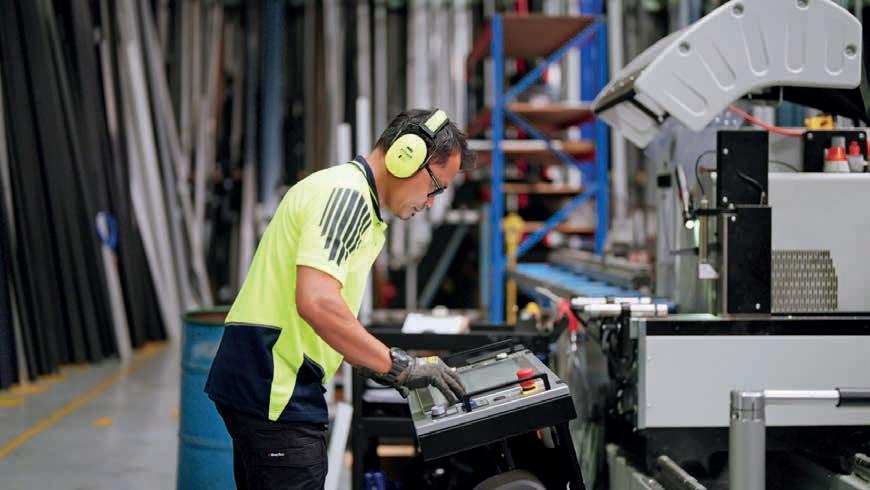
31 manmonthly.com.au Manufacturers’ Monthly
PCW crafts high-quality commercial windows for upscale residential and multi-story apartment projects, prioritising reliability.
Capral, a longstanding aluminium supplier, is a key player in PCW’s success story.
ENDEAVOUR AWARDS PROFILE
Lighting the path to germicidal technology solutions
Continuing to highlight exemplary technologies and processes, the Endeavour Awards is recognised as the premier awards program within the manufacturing industry. Lindo, an Australian Germicidal technology company, proudly received the 2023 Safety Solution of the Year award, Manufacturers’ Monthly reports.
The Safety Solution of the Year award, sponsored by Weld Australia, recognises innovative solutions that significantly enhance industry safety.
Since 2020 Lindo, the Winner of the Safety Solutions Award, has been creating innovative germicidal lighting solutions for cleaning and disinfection across a range of industries – from health and defence to transport.
The company has two influential products, the Lindo Chamber and the Lindo Light, with more germicidal solutions in development.
Lindo’s germicidal solutions utilise rays of UV-C and antimicrobial blue light to neutralise pathogens on surfaces and in the air.
Manufacturers’ Monthly spoke to Lindo founder and director, Robert Gangi, to find out more about the beginnings of this innovation, its operation, the implementation of Lindo’s solutions, and the future of the company.
The growth of Lindo
Lindo’s success at the 2023 Endeavour Awards was rewarding for both Gangi and the entire team who have worked on innovating germicidal solutions.
“The award validated our thought processes and the path Lindo is on,” Gangi said.
Lindo is currently in the process of setting up a prototyping facility, to accommodate prototyping their new processes and technologies and ultimately contribute to Australia’s efficient manufacturing sector.
“We want to use the facility to prototype new devices and products, and also use the facility to prototype manufacturing processes,” said Gangi.
Lindo will use the facility to ensure, when they begin manufacturing, that they have the most efficient and streamlined manufacturing processes for the Lindo solutions.
As a new business growing Australia’s germicidal solutions Gangi explains the importance of being resilient: “You have to be quite tenacious and you have to be very resilient.”
Lindo has received support from the Victorian government through grants and resource assistance.
Gangi explains his close work the with Global Victoria has been significant in exporting their product both nationally and globally.
“They have been really supportive and the systems they have provided have been instrumental for our large healthcare organisation agreement negotiations,” said Gangi.
A critical component of Lindo’s effectiveness is the approach Lindo takes in listening to the end user. This is to ensure the Lindo integration process is effective and fit for purpose.
Gangi explained Lindo listens to the user’s problems, current processes of how they clean and disinfect, and how absenteeism and employee sickness affects their business.
information with our most suitable solution, which could be either UV-C, blue light or a combination of both.”
An effective technology
Lindo’s germicidal solutions are backed by research and evidence: “Everything that we claim to do, we can do, and we get another approved laboratory to back that up,” said Gangi.
The Lindo Chamber is a healthcare equipment disinfector, it uses germicidal lighting to reduce pathogens such as staphylococcus by up to 99.3 percent in under 5 minutes.
The system offers detailed tracking and reporting of when the equipment has been disinfected and

32 Manufacturers’ Monthly May 2024
Images: Lindo
Lindo Light ha created a mobile roll-on disinfection device for application in emergency transport aircrafts.
doing is reducing the microbial load, over time,” Gangi said.
The Lindo Light is a collection of germicidal light fittings to automate surface disinfection.
The processes behind Lindo solutions involves duration times, for UVC light sources.
Under UVC, pathogens will reduce at a quicker rate, however, can be damaging to human skin if exposed for prolonged periods.
Alternatively, blue light will take longer to be effective, but can be exposed safely to human skin over time.
These processes are automated: “As the systems are automated, we know exactly what parts of the environment we are going to disinfect, and this provides assurance to organisations and stakeholders,” Gangi said.
Each technology, UVC and antimicrobial blue light, use certain wavelengths to disrupt the DNA of bacteria and viruses, effectively deactivating them.
Educating perceptions around the effectiveness of lighting technologies has been a challenge for Lindo.
To tackle this Lindo has focused on demonstrating the technologies effectiveness within the user’s specific environment.
Gangi explained the germicidal solutions offered by Lindo are reducing the spread of disease and the number of resources required to disinfect and clean equipment, facilities, and enclosed environments.
The safety solutions also has positive environmental impacts, Gangi said the chemical industry emits 5 per cent of global emissions and Lindo is playing their part in aiding a reduction.
Intersecting multiple industries
Lindo’s solutions were developed to be implemented across a diverse range of industry needs.

Lindo Light application into emergency transport aircrafts where the Lindo Light was installed as a mobile device to disinfect and clean the aircraft carrier.
Gangi explained the importance of the Lindo Light being locked into place to achieve a significant reduction of Staph in the environment, under a given position and time.
Lindo saw great success with their Lindo Chamber and Air Ambulance Victoria (AAV) trial, resulting in installing permanent Lindo solutions for the disinfecting and cleaning of ambulance patient stretchers.
For the AAV patient stretchers, “the chamber reduced Staphylococcus (Staph) by 99.3 per cent in five minutes,” said Gangi.
This healthcare solution enables safer and more efficient processes, Gangi said, “There is an appeal and appetite for this technology within healthcare, making it an exciting time for us.”
Further application in the health industry includes Lindo solutions being integrated into 50 aged care homes.
Lindo has also received requests for solutions to suit childcare centres and manufacturing parts and service facilities.
Another recent implementation involved the
“For this technology to be effective, you need to have a surety of the intensity, distance and duration at all times,” he said.
Lindo has partnered with Eurofins Australia, a global life sciences company providing a range of laboratory testing, to collect results and evidence of the success behind their solutions.
In a recent test, Lindo has explored portable water treatment solutions, testing included collecting water samples from the Yarra River in Melbourne and cultivated Escherichia coli (E. coli) provided by Eurofins, to put through a filtration system.
This filtration demonstrated the water samples ripple, colour, sediment, and E. coli, and is being used as efficacy research for disinfection of water supplies.
Gangi explained with Lindo being appropriate to a range of industries it is the required research and development that differentiates their ability to implement the solutions.
He said defence and aviation require partnerships and collaborations, due to the industry standards and requirements.
The
future of Lindo
Lindo is working hard on their future with a focus on advancing their product development and research to drive innovation and growth across industries.
The company is staying attentive to market needs and leveraging partnerships with academia and industry to continuously refine and grow the company’s solution offerings.
Gangi has recently meet with three potential US partners, and with the assistance of Global Victoria, is negotiating with a large healthcare organisation.
Additionally, Gangi explained the company has current research opportunities in Papua New Guinea to explore additional evidence for a portable water treatment solution.
To continuing growing the business and expand its innovative solutions, resources are being put back into the business to invest in innovation, prototyping and manufacturing.
The growth, current implementations and future plans of Lindo demonstrate its strength. “It’s all about changing lives and really benefiting the end user,” Gangi concluded.
33 manmonthly.com.au Manufacturers’ Monthly
Lindo aims to establish partnerships and collaborations within the defence industry as part of its development.
AGRICULTURE FARMING EDUCATION WASTE
MANAGEMENT RESOURCE MANAGEMENT
CONSERVATION MANUFACTURING RESOURCES
ENERGY HEALTH & SAFETY INFRASTRUCTURE
ENGINEERING MINING CONSTRUCTION
QUARRYING AGRICULTURE FARMING EDUCATION
WASTE MANAGEMENT RESOURCE MANAGEMENT
CONSERVATION MANUFACTURING RESOURCES
ENERGY HEALTH & SAFETY INFRASTRUCTURE
ENGINEERING MINING CONSTRUCTION
QUARRYING AGRICULTURE FARMING EDUCATION
WASTE MANAGEMENT RESOURCE MANAGEMENT
CONSERVATION MANUFACTURING RESOURCES
ENERGY HEALTH & SAFETY INFRASTRUCTURE
ENGINEERING MINING CONSTRUCTION
QUARRYING AGRICULTURE FARMING EDUCATION
WASTE MANAGEMENT RESOURCE MANAGEMENT


SEARCH FOR TOP INDUSTRY TALENT THROUGH OUR JOBS BOARD.
CONNECT WITH ALIGNED CANDIDATES.
BOOST YOUR CHANCES OF FINDING SKILLED APPLICANTS.
SCAN TO CREATE AN ACCOUNT TODAY AND DISCOVER YOUR PERFECT MATCH!

Automating sleeper manufacturing
Since being nominated in the 2023 Endeavour Awards for their excellence in growth, we check-in with concrete sleeper manufacturer, Sunset Sleepers, to find out more about their plans to automate production. Manufacturers’ Monthly reports.
Sunset Sleepers is a company dedicated to providing high-quality outdoor landscaping products and solutions in Australia.
Based in Melbourne, the company specialises in the manufacture and distribution of concrete sleepers. They offer a wide range of durable and aesthetically pleasing retaining wall systems, garden edging, and other landscaping products.
With a focus on both functionality and design, Sunset Sleepers aims to help customers enhance their outdoor spaces while ensuring long-lasting durability and reliability.
Their products cater to various landscaping needs, from residential garden projects to commercial developments, providing versatile solutions for creating visually appealing and structurally sound outdoor environments.
In 2021, Damian Blumenkranc and Miguel Donnenfeld assumed leadership of Sunset Sleepers and committed to a journey aimed at revolutionising the company.
Since then, Damian and Miguel have been dedicated to enhancing safety, quality, capacity, and environmental impact. The company is now on a mission to improve across all fronts.
An important step to achieving their goal is automating some of their processes.
The Endeavour Awards
Blumenkranc explained that hearing the news about the Endeavour Awards nomination was a shock, and consequently a great morale boost for his team.
“Now looking at it, it was a pleasant surprise, to be honest. We come from completely different industries,” he said.
“So, our previous business was in video production and animation.
“We have no experience in building, construction, concrete, precast, or manufacturing. So, it was all new territory for us, and we had to work exceptionally hard to adapt.”
Embracing automation
Over the past few months, Sunset Sleepers has been actively engaged in automation initiatives as part of their research and development projects aimed at enhancing their production efficiency.
“In our research and development project on automation, we’re striving to find ways to further improve production efficiency,” said Blumenkranc.
“In our manufacturing facility, we currently have three stations: one for preparing moulds for the field, another for filling, and a third for demolding.”
Their objective is to combine those three lines into two and automate tasks involving manual movements as much as possible.
“Over the past three years, we’ve already achieved a 70 per cent reduction in manual handling. Our next step is to further enhance efficiency, primarily by reducing movements, time and improving consistency,” Blumenkranc explained.
Additionally, Sunset Sleepers is aiming to improve quality standards through their automation initiatives.
35 manmonthly.com.au Manufacturers’ Monthly ENDEAVOUR AWARDS PROFILE
Image: Sunset Sleepers
ENDEAVOUR AWARDS PROFILE
“We have been diligently focused on enhancing quality, striving to take significant strides forward in our quality improvement efforts,” said Blumenkranc.
As Blumenkranc continued to explain, automation is essential for producing high-quality products consistently.
“Funnily enough, we’re not primarily focused on cutting times. Our schedules are already quite tight,” he said.
“Our main emphasis is on ensuring consistency across our production line, particularly in reducing flow variation to minimise the human factor.
“Additionally, our focus is on enhancing quality to address any manufacturing issues and taking safety measures to the next level.”
Challenges in manufacturing
As Blumenkranc continued to explain, emphasising the importance of automation for maintaining consistent high-quality products, Sunset Sleepers faces challenges in their manufacturing process.
These challenges primarily revolve around materials handling, maintenance, safety, and quality control.
“Due to the substantial volume of heavy weights being moved daily, heavy lifting and handling operations are a constant concern,” said Blumenkranc.
Additionally, the team at Sunset Sleepers is aiming to address challenges in maintenance. As Blumenkranc explained, the company is dealing with harsh working environments, and the wear and tear of machines and equipment is common.

improving safety measures and ensuring that all team members strictly adhere to safety protocols.
“With numerous forklifts involved in lifting heavy items, ensuring safety is a top priority for us.
“We are continuously striving to enhance safety measures and ensure strict adherence to safety protocols by all team members.”
Additionally, they are dedicated to enhancing product quality, addressing any manufacturing issues, and elevating safety measures to the next level.
Blumenkranc explained that Sunset Sleepers utilises total productive maintenance (TPM).
“In addition to daily checks and a structured maintenance program, we implement proactive measures such as building and stocking spare parts to prevent potential breakdowns,” he said.
“We also have reactive solutions in place to swiftly address any issues that arise.”
Expansion plans
Apart from automation, Sunset Sleepers have also been exploring potential expansion plans to increase capacity for the year ahead.
“We’ve been exploring potential expansion plans for the upcoming year, aiming to boost our capacity.”
The company has recently welcomed Simon, who will be acting as the new chief operating officer,
“He brings invaluable expertise from the UK, he has a rich history of leadership, having served in roles like head of innovation and manufacturing engineering manager.”
Additionally, Sunset Sleepers has recently added two new trainees to their team, tasked with developing internal health and safety procedures.
One of their first steps to boost capacity, is to ensure that their sleepers are accessible at locations where demand is high.
“We aim to ensure that our sleepers are available at locations where people need them,” said Blumenkranc.
Sunset Sleepers is actively working on finding shipping solutions, recognising the importance of shipping in their operations.
“Exploring affordable shipping solutions has become a pivotal focus for us, shaping the core of our operational strategies,” explained Blumenkranc.
Sunset Sleepers ultimately emphasises the importance of continuous growth and innovation, particularly through the automation of processes and the development of new products.
“We’re consistently prioritising quality and adherence to our values of respecting safety standards, placing emphasis on newer, more stringent quality and safety measures,” said Blumenkranc.
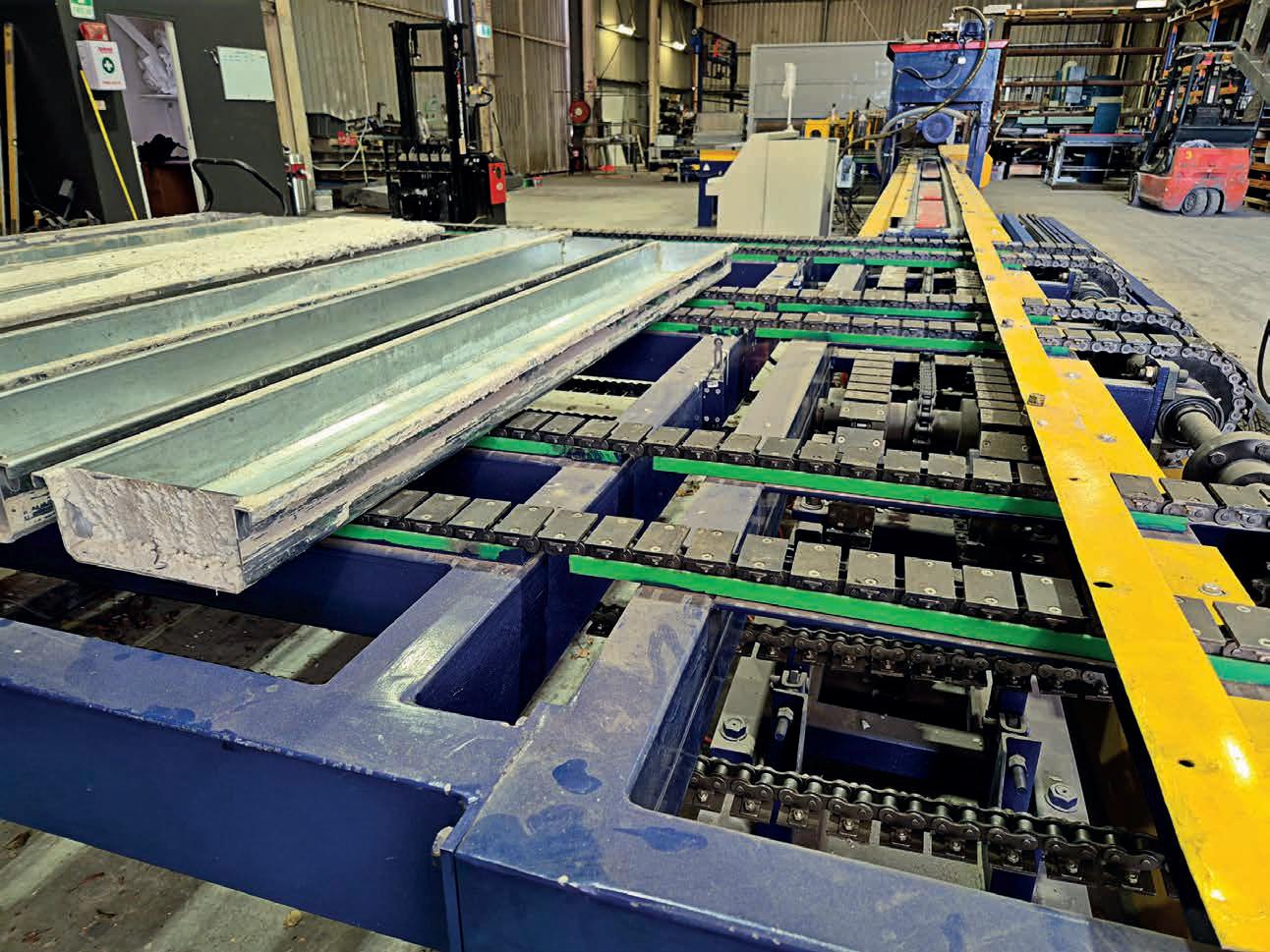
36 Manufacturers’ Monthly
Sunset Sleepers produces 100mm steel posts for 7580mm concrete sleepers and heavy-duty 150mm posts for 100mm. 120mm sleepers, up to nine meters long.
Image: Sunset Sleepers

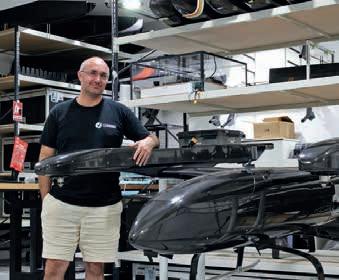



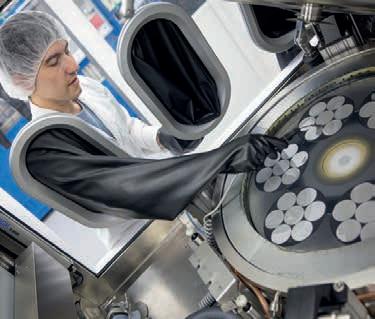




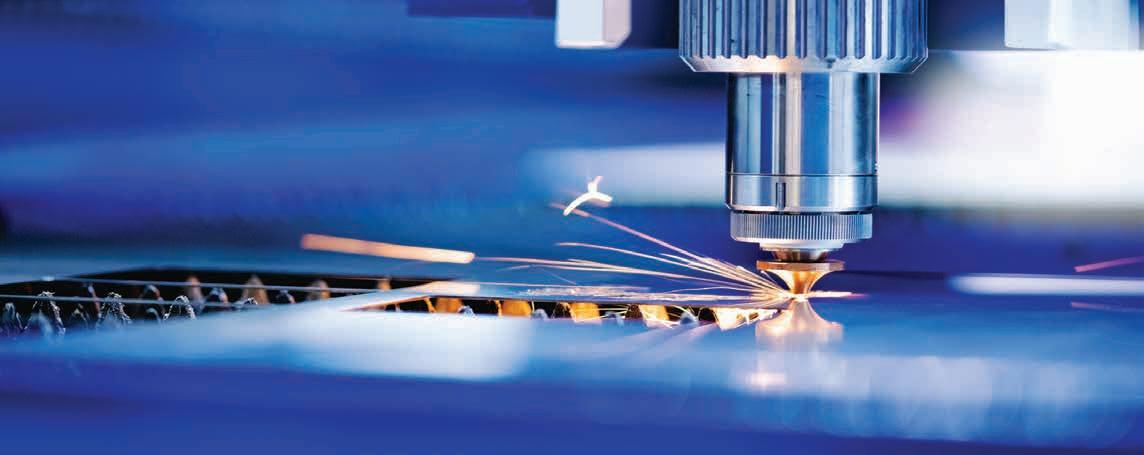
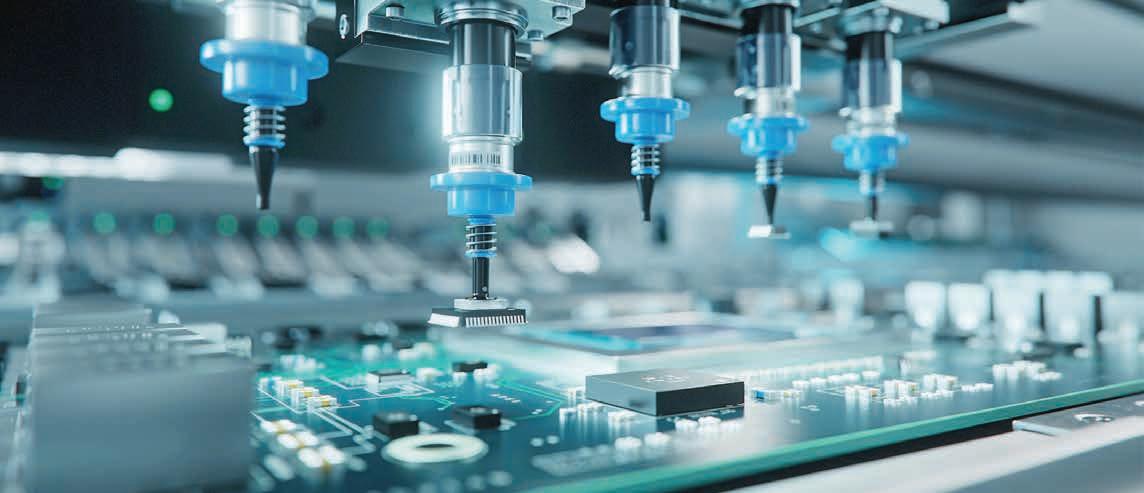
For over 59 years, Manufactures’ Monthly has lead and informed Australia’s manufacturing industries with its highly creditable editorial analysis of the market. manmonthly.com.au MANAGEMENT >> TECHNOLOGY >> SOLUTIONS APRIL 2024 >> Verbotics automation software 32 SICKproximitysensor OfficialIndustryPartners: semTECHNOLOGYMANUFACTURINGconductor FROM to LiDAVfromAdvancedNavigation 48 manmonthly.com.au MANAGEMENT >> TECHNOLOGY >> SOLUTIONS MAY 2024 >> INSIDE >> Endeavour Awards profile 32 Capral’s trusted quality 30 Official Industry Partners: FROM YACHT RACING, TO UAV MANUFACTURING 3D printed metamaterial 47 Visit the Manufacturers Monthly website to subscribe to the magazine or to view the digital edition. For all the latest news including government announcements and breaking news follow us on social media and subscribe to the newsletter by scanning the QR code. www.manmonthly.com.au For more information, contact Emily Gorgievska 0431 330 232 Manufacturers Monthly Manufacturers’ Monthly Manmonthly


As manufacturers prepare for tax season, a thorough grasp of the tax landscape and its impact on business operations is essential. As this article explores, RSM provides a variety of services to assist manufacturers with their tax needs. Manufacturers’ Monthly reports.
In the manufacturing industry, strategic tax planning plays a pivotal role in driving financial success and ensuring long-term sustainability.
Manufacturers face unique challenges and opportunities regarding tax compliance, cash flow management, and leveraging incentives for innovation and growth.
RSM Australia, part of the global network RSM International, offers tailored audit, tax, and consulting services to various industries, including manufacturing.
RSM offers a comprehensive suite of services to the manufacturing industry including:
• Transaction advisory: Helping in M&A lead advisory, debt advisory, due diligence, valuations, tax advisory, and financial modelling, guiding manufacturers from growth and funding stages to business sale.
• Data analytics: Offering insights into manufacturing chains, including business process improvement, customer growth, data management, and more.
• Transfer pricing: Assisting manufacturers with international related party sales and supply chains.
• R&D: Helping clients access potential R&D tax
offsets for implementing new technology in manufacturing processes or developing new/ improved products, processes, and equipment.
• S oftware: Providing advice on the appropriate digital ecosystem for manufacturers, including NetSuite and ERP solutions for those requiring more advanced platforms for cost accounting, inventory, and other manufacturing accounting needs.
• Management reporting: Offering customised management reporting and dashboarding to provide better business oversight and insights for manufacturing business owners and managers.
Business advisory Principal at RSM Australia, Ross Dixon, emphasises the significance of fundamental business principles and forward-looking strategies in navigating an evolving economic landscape.
“Considering recent economic changes, such as interest rate rises and fluctuations in trading conditions, understanding consumer confidence is more crucial than ever for businesses,” he explained.
“Rather than solely focusing on tax minimisation, businesses should prioritise taking a forward-
looking approach and consider the broader health of their operations.”
Understanding tax incentives
Manufacturers can benefit from a range of tax incentives designed to stimulate innovation and investment in the industry.
For example, Research and Development (R&D) tax incentives provide opportunities for manufacturers to offset costs associated with developing new products, processes, and technologies.
By leveraging R&D tax incentives, manufacturers can enhance their competitive edge, drive innovation, and fuel growth.
“Notably, engaging in the R&D tax incentive and maintaining ongoing capital investment may provide greater access to grant opportunities as they arise, including those from both state and federal governments,” said Dixon.
Navigating tax liabilities
One of the key challenges manufacturers often face is managing tax liabilities effectively.
38 Manufacturers’ Monthly May 2024

By effectively managing the variety of tax obligations, manufacturers can reduce the burden that tax can have on cash flow, freeing up resources for growth and innovation.
Manager at RSM Australia, Thomas Leslie, highlighted the importance of addressing superannuation and employee obligations, considering the increased compliance activities and penalties in these areas.
By staying proactive and ensuring compliance, manufacturers can mitigate risks and optimise their tax positions.
“At the forefront of current discourse in tax compliance is the topic of superannuation, where there are significant efforts to enhance compliance,” said Leslie.
“Taking proactive steps with superannuation has led to favourable outcomes for businesses – employment expenses make up a significant portion of input costs for manufacturers.”

Getting tax compliance right is crucial for businesses during a period of increasing complexity and heightened focus by the ATO on tax and superannuation compliance.
Effectively navigating tax liabilities helps manufacturers adhere to tax laws and avoiding possible reviews and fines.
Proactive tax planning
Proactive tax planning is essential for manufacturers to minimise tax liabilities and optimise cash flow.
This involves carefully considering the year-todate performance of the business, identifying available deductions and credits, and implementing strategies to optimise the income tax position.
“Generally, the best kind of outcomes we see, is when manufacturers have engaged with us throughout the year and particularly during the tax planning process,” said Dixon.
“What we’re emphasising is the heightened aggressiveness and proactive stance of the ATO in pursuing small business debt, including interest charges.
“Additionally, it’s crucial to prepare a budget and cash flow projections for the upcoming financial year to anticipate potential fluctuations in working capital that may arise.”
Subsequently, this would enable proactive strategizing to secure funding from banks or negotiate extended payment terms with suppliers, effectively managing cash flow fluctuations throughout the year.
“We strongly recommend that manufacturers align their reporting framework and finance function with the business’s needs to allow for clear data-driven decision-making by management,” said Dixon.
“We would encourage business leaders to meet
with their advisor to review what the tax obligations might look like for the financial year.”
Leslie added that setting business targets and financial goals is an important step in optimising cash flows.
“An essential element of optimising business performance and improving cash flows is creating clear goals during the planning process” he said.
“Clients we see excel are those who are adept at taking action and achieving tasks whilst striving towards their clearly defined objectives.
“Target setting not only contributes to the establishment of a reporting framework but also provides a benchmark for business performance to be assessed against.”
Leveraging technology
The adoption of technology can play a crucial role in streamlining tax processes and optimising financial management.
Advanced software solutions, such as enterprise resource planning (ERP) systems and data analytics tools, enable manufacturers to automate accounting processes, track expenses, and generate insights for informed decision-making.
By embracing technology, manufacturers can enhance efficiency, accuracy, and transparency in tax reporting and compliance.
Supply Chain Optimisation
Optimising supply chains is another key aspect of strategic tax planning for manufacturers.
By streamlining supply chain processes, manufacturers can reduce costs, improve efficiency, and minimise tax implications related to inventory management, procurement, and logistics.
Inventory and Work-in-Progress figures should be continually monitored as part of a standard
financial reporting framework to allow for both management data and an accurate tax forecast for the financial year.
Implementing best practices in supply chain management enables manufacturers to achieve greater financial agility and resilience in an increasingly dynamic market.
International tax compliance
Manufacturers operating in global markets must navigate complex international tax regulations to ensure compliance and minimise tax risks.
International tax compliance involves understanding a variety of complex themes including cross-border tax implications, transfer pricing rules, and international tax treaties.
By partnering with tax advisors with expertise in international taxation, manufacturers can effectively manage their tax obligations while expanding into new markets and driving global growth.
“With a presence in 120 countries, our firm leverages the extensive expertise of our member firms to achieve significant successes in tax and business outcomes,” said Dixon.
“Collaborating with our member firms on both ends of transactions has enabled us to deliver strong client outcomes.”
Strategic end of financial year planning is critical for manufacturers to optimise financial performance, minimise tax liabilities, and achieve sustainable growth.
By understanding tax incentives, proactively planning, leveraging technology, optimising supply chains, and ensuring international tax compliance, manufacturers can unlock their full financial potential and thrive in today’s competitive manufacturing landscape.
39 manmonthly.com.au Manufacturers’ Monthly
RSM advises year-round engagement for optimal outcomes, and urges proactive financial planning.
Image: wutzkoh/stock.adobe.com
MATERIALS HANDLING
A hoist built to last
With more than 80 years of experience in chain hoist manufacturing, Kito PWB aims to introduce their latest RY Wire Rope Hoist series to the Australian market. Manufacturers’ Monthly reports.
Since 1923, Kito has been offering custom industrial lifting solutions to their network of distributors. Their catalogue mainly consists of lifting hoists, chains and associated products.
The newest addition to their offerings in Australia is the RY Wire Rope Hoist, which has been crafted with a primary focus on safety, reliability, and performance.
The hoists are equipped with features and advantages tailored for demanding applications; they’re made to be functional and resistant to damage over time.
“The RY Wire Rope hoist incorporates technology that Kito has been pioneering for many years, particularly in the integration of inverters in hoisting equipment,” said Glenn Morgan, national hoist manager at Kito Crosby Australia.
Due to the success of the RY Series in America, Morgan anticipates that the hoist will be as equally well received in the Australian market.
“Kito has long been renowned for delivering high-quality chain hoists, and the RY was initially developed for the American market around a decade ago and has since gained widespread acceptance there.”
“Like any Kito product, it’s made to a high quality and designed to last.”
Key features
Most hoists on the market are made to be customisable, where new features can be added for a certain price.
Features like soft start and stop, variable speed control, overload protection, automatic load detection and condition monitoring via hour meter and operation counter for example.
“Soft start and stop provides a smooth transition, going from high speed to low speed to high speed and back again,” said Morgan.
The Kito RY Wire Rope hoist, however, is manufactured with these features included.
“Our competitors are offering these features, but from what I’ve seen, buyers have to spend more,” said Morgan.
“But with Kito, these features are standardised with all of our hoists.”
“Having soft start and stop, for example, means that when you’re lifting delicate components, it’s much smoother lift, much easier and much nicer lift so less likely to damage the component.”
The hoist system also features dual-speed control through Variable Frequency Drive (VFD) technology for both hoist and trolley operations and it incorporates a high-speed function for lowload scenarios.
To ensure that the hoist is protected in all scenarios, the system is fitted with electronic overload protection with limiters, thermal protection for the motor, easily accessible condition monitoring via hour meter and an operation counter.
Morgan emphasised that the safety features integrated into the hoist, such as the electronic overload limiter, upper and lower travel limit switches for precise hoisting control, are all in compliance with Australian standards.
Additionally, the hoist has side guide rollers for the trolley, ensuring smooth operation without risking wheel flange wear or beam damage.
Furthermore, the hoist is equipped with premium IWRC high-strength wire rope and externally adjustable upper and lower limit switches.
It also features maintenance-free highperformance brakes rated for one million starts, a full 360° high-strength rope guide, and includes guide rollers and rubber trolley bumpers.
According to Morgan, these design elements prevent issues associated with wheel flange wear or beam damage, ensuring optimal performance and longevity.
All of these features are made to meet standard configurations certified and conforming to AS 1418 regulations.

“For us, our utmost priority is maintaining the superior quality and enduring reliability of Kito,” said Morgan.
“It’s not just about its durability, but also about its steadfastness and safety features that we value the most.”
Customers often find the installation process of Kito hoists to be straightforward and hassle-free, praising the ease with which they can set up the equipment.
Morgan explained that the hoist is extremely easy to install relative to its competitors.
“Everyone that that we’ve sold the unit to has commented on how easy they are to install and because of this, they are now in fact only using the Kito Wire rope hoists,” he said.
“When you’re thinking about putting something that weighs half a tonne to a tonne up in the air and sometimes suspended at six, or eight metres, it must be easy to install.”
Once installed, The RY Wire Rope Hoist is equipped with impressive lifting capabilities, boasting the ability to handle loads of both five and 10 tonnes.
Kito RY Wire Rope hoist includes features like soft start/stop, variable speed, and overload protection.
40 Manufacturers’ Monthly May 2024
Images: Kito
“The five-tonne hoist will lift up to 10.2 metres, whereas the 10-tonne hoist will lift 10 tonnes up to 12 metres,” said Morgan.
“Additionally, it includes low load high-speed function, which increases speed by 50 per cent when the load is detected to be less than 30 per cent of the rated capacity.”
Applications
Wire hoists serve as essential tools across multiple industries, finding applications in mining, construction, engineering, warehousing, and manufacturing.
Their robust construction and lifting capabilities ensure the smooth operation of mining activities while maintaining safety standards in challenging environments.
Similarly, wire hoists play a pivotal role in the construction industry, where they are indispensable for lifting and positioning heavy materials such as steel beams, concrete panels, and prefabricated structures.
Within warehouses and distribution centres,
pallets, and containers.
These hoists streamline logistics operations by facilitating the efficient handling of goods and materials, contributing to increased productivity and operational efficiency in warehouse environments.
Morgan explained that Kito hoists can survive in almost any work environment.
“For us, the paramount concern is the exceptional quality and durability of the Kito hoist,” said Morgan.
“With decades of experience in the industry, Kito hoists are widely regarded as the go-to choose for the most challenging environments and applications, known for their near-indestructibility.”
Hoist distribution
Kito distributes their hoists through a diverse network of distributors spanning across different states nationwide.
This decentralised approach allows Kito to efficiently reach customers across different geographical areas and ensures that their
“We’re completely independent, as we manufacture and supply hoists to our distributors, and then they install, inspect, service and maintain them,” said Morgan.
Kito ensures that their distributors receive comprehensive training on servicing, inspecting, and repairing hoists.
Future developments
Currently, Kito only offers hoists that mount onto a single beam. This comes with its own drawbacks, as single beam hoists are only capable of lifting to a certain amount.
Kito intends to expand its offerings to include a twin beam hoist option, which can offer increased load capacity and enhanced stability –reducing the risk of swaying or tilting during lifting operations.
“Our aim is to offer various capacities to suit different needs, and we’re considering adjustments to accommodate this.”
“This includes potentially transitioning to a twin beam setup instead of our current single model

41 manmonthly.com.au Manufacturers’ Monthly
Wire hoists vital in mining, construction, warehousing, and manufacturing for lifting heavy materials and ensuring safety.
Navy Chiefs gather for Perth AUKUS event
The Chiefs of Navy for all three AUKUS nations will gather in Perth for the Indian Ocean Defence & Security conference and exhibition (IODS 2024) in July, after the recent announcement that the US Navy’s Chief of Naval Operations Admiral Lisa Franchetti will attend the event.
Admiral Franchetti will join the United Kingdom’s First Sea Lord, Admiral Sir Ben Key, and Australia’s Vice Admiral Mark Hammond at IODS 2024 to be held at the Perth Convention and Exhibition Centre from 24-26 July.
The gathering will be the first time the Chiefs of Navy for all three AUKUS nations have been in Australia at the same time, marking another milestone in development of the AUKUS partnership and underlining the importance of the IODS event as a platform for engagement.
The biennial Indian Ocean Defence & Security conference and international industry exhibition will highlight challenges and opportunities for international engagement, and discuss how industry may support diplomacy, defence, and security policy in the region. In 2024, IODS will explore the theme: Where AUKUS Meets the Quad.
The conference program will include a series of panel discussions on key topics, from global instability and the Indian Ocean to implications of AUKUS for industry, workforce development and training, Indian Ocean naval cooperation and the Indian Ocean airborne maritime domain.
Speakers will include former US Navy and US National Security Council personnel, directors of Australian and Indian regional research and security institutes and senior executives of major submarine and defence manufacturing organisations Babcock and HII Group.
Western Australian Defence Industry Minister Paul Papalia said having key naval figures attend IODS 2024 reflects the critical importance of Western Australia in the acquisition of conventionally armed nuclear-powered submarines that will be based at HMAS Stirling.
“Having all three AUKUS nations’ Chiefs of Navy attend our Indian Ocean Defence and Security Conference reinforces Western Australia’s central role in delivering and the ongoing sustainment of nuclear submarines,” he said.
“The rotation of nuclear-powered submarines through HMAS Stirling is a significant opportunity for our local defence industry and will support the diversification of our economy and create more jobs for Western Australians.”
The announcement comes at a time when the AUKUS nations have launched the first
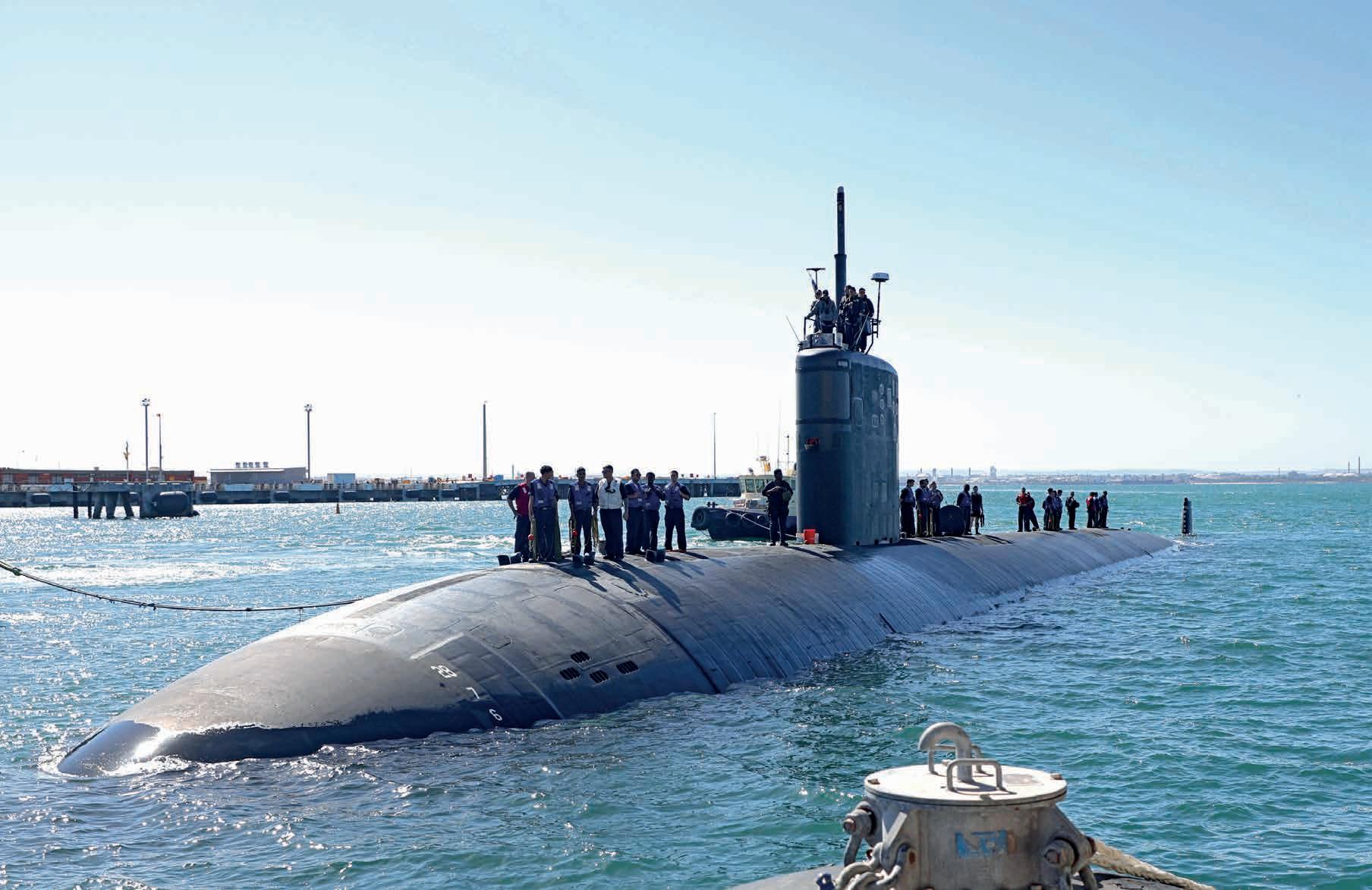
in a series of AUKUS Innovation Challenges, with the participating nations collaborating on development of technologies and systems that will ultimately benefit all through the partnership.
The AUKUS Electronic Warfare Innovation Challenge was recently launched through the Advanced Strategic Capabilities Accelerator (ASCA), delivering on a commitment made by AUKUS Defence Ministers in December 2023.
This first AUKUS Challenge will seek innovative solutions to shared electronic warfare challenges from industry and research institutions in Australia, the United Kingdom, and United States.
ASCA will lead the Australian component of this challenge simultaneously alongside the United Kingdom, led by the Defence and Security
Accelerator, and US, led by the Defense Innovation Unit.
Defence is looking forward to working with industry and research institutions to deliver cutting-edge capabilities for the Australian Defence Force while securing a competitive advantage to deter threats to regional security.
Each country will assess winners based on a set of pre-determined criteria aligned to national interests and priorities, with shared access to the best solutions across all three national challenges.

“The electromagnetic spectrum is an increasingly contested, complex and competitive environment,” said Professor Emily Hilder, Head of ASCA.
“It is exciting that electronic warfare is the first
42 Manufacturers’ Monthly May 2024
DEFENCE INSIGHT
Admiral Sir Ben Key, KCB CBE ADC, First Sea Lord, Royal Navy.

of the AUKUS Innovation Challenges and we look forward to seeing not only what Australian capability is available, but across our AUKUS partners as well.”
Stephen Moore, first assistant secretary AUKUS Advanced Capabilities, Department of Defence, said the AUKUS EW challenge was an opportunity for Australian industry to highlight its innovation to Australia’s AUKUS partners.
“The release of this challenge creates an opportunity for Australian defence industry and academia to pitch the very best ideas to a trilateral audience,” he said. “Defence is pleased to be delivering this Challenge through ASCA.”
AUKUS is best known for the paradigm-changing Pillar 1 program to equip the Royal Australian Navy with nuclear-powered, conventionally armed submarines. At an estimated $368 billion over the life of the project, this will be the largest single defence acquisition in Australian history, delivering a platform acknowledged as the most complex moving vehicle on the planet.
But if the program delivers as promised, the AUKUS “Advanced Capabilities Pillar 2” will also offer opportunities for a broad range of Australian specialist industry, in fields from undersea capabilities to hypersonics, electronic warfare, AI and cyber.


43 manmonthly.com.au Manufacturers’ Monthly
Vice Admiral Mark Hammond, AO, RAN, hief of Navy Australia.
Admiral Lisa Franchetti, US Chief of Naval Operations.
ENGINEERING FOCUS
3D printed titanium metamaterial unlocks mega strength at low density
Researchers from RMIT have published their success in a 3D printed titanium
Ititanium metamaterial.

high levels of strength when compared to what is seen in nature and current manufacturing, and could change a range of manufacturing methods from medical implants to aircraft or aerospace parts.
This metamaterial showcases a unique lattice structure design. Manufacturers’ Monthly spoke with RMIT led project researcher and distinguished professor, Ma Qian, to further understand what influenced the development of this metamaterial.
Precision strength
The primary aim of this research was to enhance the capability of 3D printing materials with low density and high strength, introducing innovations not yet witnessed in the industry.
RMIT researchers have developed a new way to design and create structures using a mainstay
cycle, biocompatibility and heat resistance.
The unique lattice structure design breakthrough was evolved through the combination of two cell structures, taking advantage of merits from each of the structures.
“Our design is brand new,” said Qian. “We call this design multi topology, where the structure is interpenetrating and coherent.”
The first cell structure is a hollow-strut unit, which is porous, and the second cell structure is a thinplate unit.
By combining the two structures, the RMIT researchers achieved a unique coupled unit cell.
Qian explained they have been working at replicating cellular structures since 2013. “There are very good reasons for making this design, based
WE54 magnesium alloy is an alloy commonly used in aerospace, defence and motorsport applications as a high performance, weight reducing material and has a density of 1.8 g/cm3 which is a similar density to the RMIT manufactured material.
However, it is the strength that shines light on this industry innovation.
Qian emphasised the strength: “The yield strength of the high-performance WE54 magnesium alloy is only about 165 megapascal and ours is 260 megapascal, the density is almost identical, however our material is much stronger and much more resistant to shape change.”
One of the prominent issues faced with metamaterials is stress concentration.
To avoid premature collapse or failure, it is
RMIT University 44 Manufacturers’ Monthly May 2024
Pictured from left to right: Professor Martin Leary, professor Ma Qian, PhD candidate Jordan Noronha and professor Milan Brandt at RMIT’s Centre for Additive Manufacturing. Images:
imperative to evenly spread the stress throughout the metamaterial structure. 3D printing of this new lattice structure, TP-HSL, evenly distributes stress and avoids the possible failures due to local stress concentrations.
RMIT researchers are reshaping the possibilities of metamaterial design across multiple manufacturing industries, defying traditional industry limitations.
How it works
The lattice model is composed of 5 × 5 × 5 cells, where the model is structured into a grid-like arrangement of cells, with dimensions specified as 5 units in length, 5 units in width, and 5 units in height.
Integrating thin plates into the structure reduces the size of the hollow strut channel from 3 to 1.15 mm.
“Each individual structure is one topology, that is why we call it a multi-topology,” Qian said.
The metamaterial’s creation was made possible by utilising the laser powder bed fusion process at RMIT’s advanced manufacturing precinct.
Qian explained that with large metal laser powder bed fusion printers in the market today, the printing production can be significantly accelerated.
These processes allowed them to change the size of the unit cells in the lattice structure meaning they could control the density of the final product.
The titanium lattice cube was printed using this laser powder bed fusion process and demonstrated a strength 50 per cent higher than the strongest cast magnesium alloy.
RMIT’s lattice design enhances strength and deflects cracks, which significantly improves the toughness of the structure.
Three different densities of the TP-HSL structures show consistent results, with densities of 1.0, 1.5, and 1.8 grams per cubic centimetre (g/cm−3).
This was achieved by adjusting the size of the unit cell, ranging from 7.58 to 13 mm.
“We print the materials from the bottom to the top, layer by layer, the thickness of each layer is only 30 micrometres, with many layers, between each layer they are nicely bounded by the high laser energy,” Qian said regarding the intricate printing process.
With funding from the Australian Research Council, discovery programs enable the uncovering of new material technologies.
“We keep discovering these wonderful new materials and you will find a reasonable application, such as in aerospace, defence and other industries,” Qian said.
Laser 3D metal printing has opened numerous advancements, “The laser 3D metal printing has enabled many new developments, including the capability of using recycled materials or scrap metal,” said Qian.
Development inspirations
Taking inspiration from nature’s efficient cellular structures found in plants, such as the Victoria water lily and organ pipe coral, Qian explained the challenges of replicating such structures within metals.
Natural surroundings and natural materials are predominantly porous materials with porous structures. This makes it challenging to draw on natural materials for additive manufacturing.
Mechanical metamaterials
While definitions of metamaterials vary throughout industries, the development of RMIT’s TP-HSL printed titanium structure is referred to as
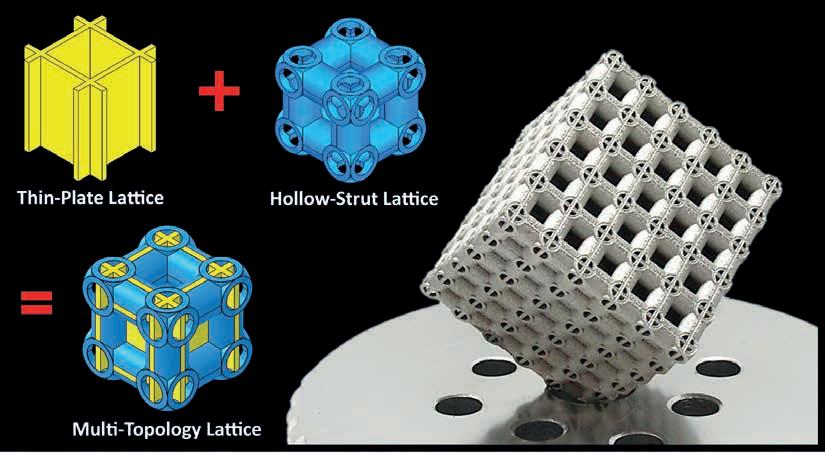
a mechanical metamaterial.
“The main properties are the low density and high strength, plus added multifunctionality,” Qian said.
Mechanical metal metamaterials are cellular materials, consisting of interconnected struts, plates, sheets, or shells.
“Which is not achievable from nature and not achievable from conventional manufacturing methods ,” Qian said.
The cavity or pore sizes range from submillimeter to millimetre scale and are usually arranged in repeating units.
“We are focused on their mechanical properties,” Qian said.
To test the new design, RMIT researchers used a technique called finite element method (FEM) analysis.
The findings showed that their TP-HSL structure had significantly lower stress concentrations compared to standard hollowstrut lattice (HSL) structures of the same density.
This means that the TP-HSL structures are less likely to fail prematurely and are more structurally sound overall.
Additionally, testing throughout the development of printing the 3D titanium structure, included RMIT researchers comparing their metamaterial with existing aerospace grade magnesium alloy.
Prospects and future industry applications
The printability of this metamaterial, alongside its exceptional strength positions it as a promising solution for various industry applications.
With features of biocompatibility, corrosion resistance and heat resistance this metamaterial is superior to common commercial alloys.
Future applications of the metamaterial include manufacturing of aerospace components – such as the development of structural components that contribute to fuel efficiency and performance improvements; medical implants –such as the manufacturing of implants including bones or joint replacements; and applications in defence and military equipment manufacturing – such as armour or protective vehicle and personal structures, including marine and offshore applications, drones and robots.
It also has the potential to aid energy sectors as a lightweight and durable component in the creation of renewable energy systems.
The RMIT research team is continuing its work, refining the primary research focus to ensure the material can reach maximum efficiency by testing the metamaterial in higher temperature environments.
45 manmonthly.com.au Manufacturers’ Monthly
Multi-topology (thin plate + hollow strut) lattice design and a 3D printed specimen in titanium.
ENGINEERING FOCUS
Currently the Ti-6Al-4V metamaterial is resistant to temperatures as high as 350°C. The research team is exploring the use of more heat-resistant titanium alloys for this design, such as those that can withstand temperatures up to 600°C.
This continuing exploration will make the titanium structure ideal for application in aerospace or drones.
Qian also envisions generative artificial intelligence to work collaboratively with researchers, aiding future design processes.
“We could expect to see more breakthroughs in the mechanical properties and functionalities,” he said.
This structure was printed using titanium alloys; however, Qian explained the unique lattice structure design can be manufactured in many other alloys such as aluminium alloys or stainless steels.
This research outcome positions Australia at the forefront of innovative manufacturing technologies on a global scale.
“We are at the forefront of research, in terms of design innovations and the record mechanical properties we have achieved,” Qian said.
Throughout the development of the TP-HSL structure RMIT researchers have demonstrated the country’s capacity for innovative advancements in material science and additive manufacturing.
Enabling the manufacturing industry’s ability to produce advancement materials that can allow the production of high value unique parts that were not possible before.
“This could help the Australian manufacturing industry to expand or lead new markets and develop new business opportunities and partnerships and I think this is important,” Qian said.
This outcome from RMIT showcases Australia’s willingness to push the boundaries of technological advancements and positions the country as leaders in the field of metamaterial research and development for manufacturing abilities.
Qian also explained the significance of this material in comparison to other materials.
“The metamaterials offer the combination of mechanical properties and the functionality that are unattainable from all other materials,” he said.
Future implementation of this highstrength metamaterial opens unique opportunities for metal 3D printing throughout the manufacturing industry.
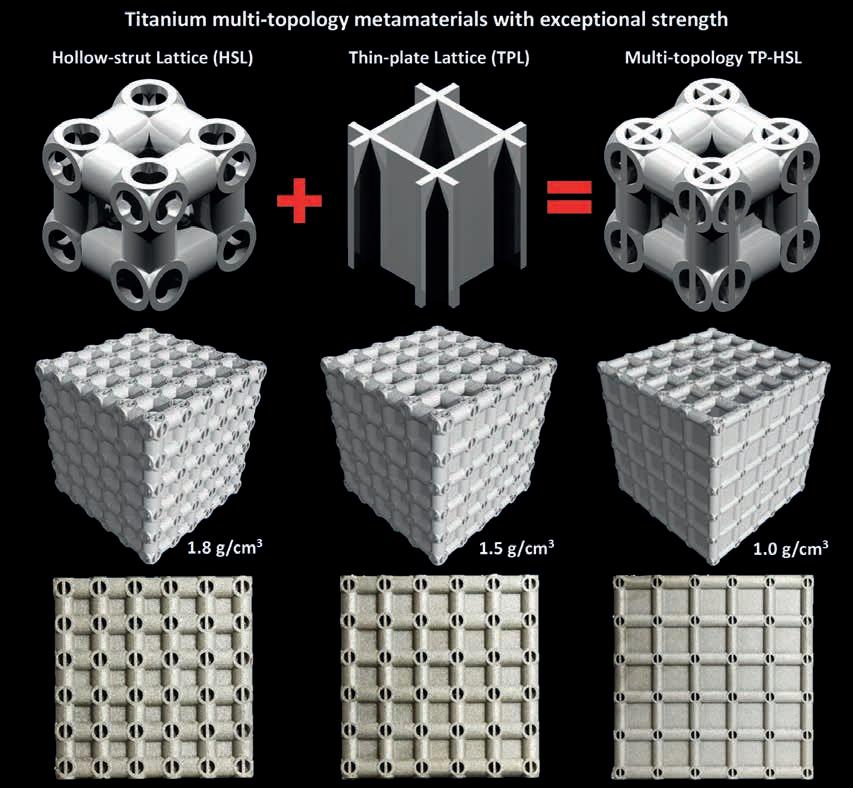
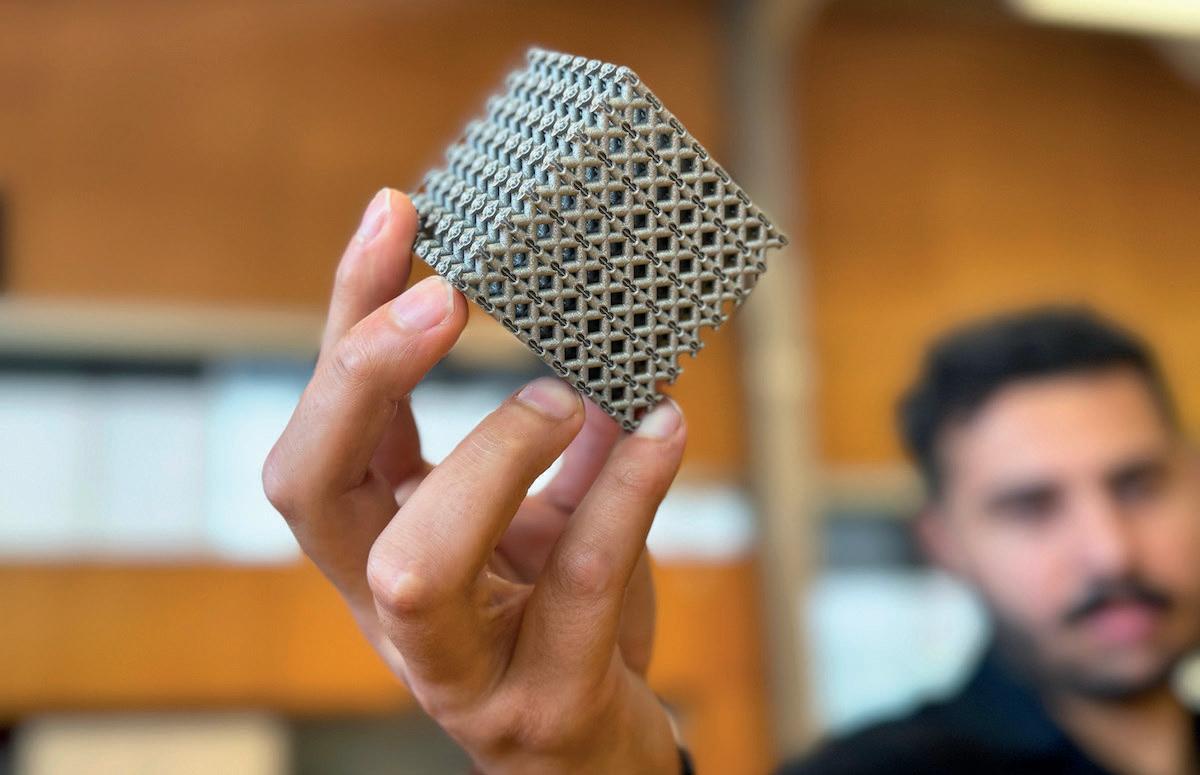
46 Manufacturers’ Monthly May 2024
RMIT’s metamaterials uniquely combine mechanical properties and functionality, surpassing those of traditional materials.
Multi-topology (thin plate + hollow strut) lattice designs and three 3D-printed specimens in titanium with different densities.

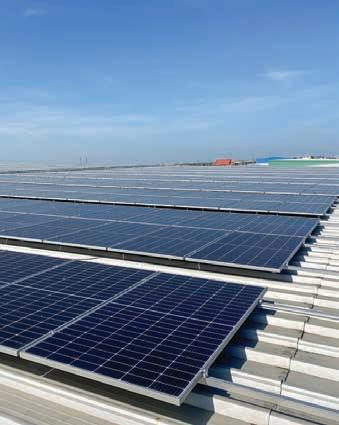
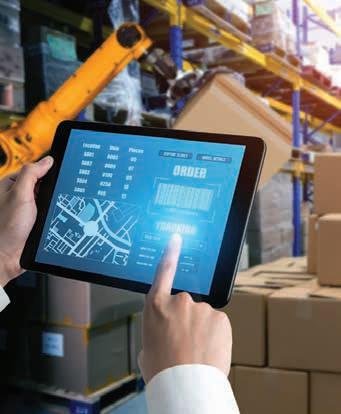


MEGATRANS is Australia’s largest integrated conference and exhibition dedicated to the logistics industry. MEGATRANS is an interactive expo, reserved for companies offering advanced technology technologies and services, grouped by their contributions to the sustainable supply chain. IN CONJUNCTION WITH ASSOCIATION PARTNERS PROUD SPONSOR FLEETS OF THE FUTURE THE ZERO CARBON WAREHOUSE COLD CHAIN SOLUTIONS THE TRACEABLE SUPPLY CHAIN Will you be a part of the supply chain of the future? BOOK YOUR STAND TODAY megatrans.com.au Melbourne Convention and Exhibition Centre 18-19 SEPTEMBER 2024 Don't miss out, secure a prime position
ICP Electronics Australia Presents ICP DAS USB4018HS-16 16-Channel High Speed Thermocouple Measurement USB I/O Module
Subheading
ICP Electronics Australia is proud to introduce ICP DAS USB-4018HS-16. The ICP DAS USB4018HS-16 emerges as a cutting-edge solution in the realm of data acquisition, particularly designed for precise thermocouple measurement across a diverse range of industrial applications.
As part of the USB-4000 series, this 16-channel high-speed thermocouple measurement USB I/O module stands out for its ease of use and rapid deployment capabilities, offering a seamless USB 2.0 full-speed (12 Mbps) connection without the need for an external power supply, being efficiently USB bus-powered.
One of the distinguishing features of the USB-4018HS-16 is its comprehensive support for various thermocouple types including J, K, T, E, R, S, B, N, C, L, M, and LDIN43710, ensuring versatility across different temperature measurement needs. Its capability for automatic cold-junction compensation on each channel enhances measurement accuracy, critical for applications in sensitive manufacturing processes.
The device also boasts a robust design with 3000 VDC intra-module isolation, enhancing its reliability and safety in industrial environments.
The inclusion of a lockable USB cable ensures a secure connection, preventing accidental
disconnections that could lead to data loss or measurement inaccuracies. The LED indicator for power status adds to its user-friendly design, providing immediate visual feedback on the device’s operational status.
Designed with applications in mind, the USB4018HS-16 is ideal for industries requiring precise temperature measurements such as SMD assembly manufacturing, PC board manufacturing, footwear and pharmaceutical industries, and the food industry. Through the USB-4000 series Utility, users can effortlessly configure and test the module, making advanced data acquisition accessible without extensive coding knowledge. This blend of ease-of-use, precision, and safety certifications (CE, UKCA, RoHS, WEEE) marks the USB-4018HS-16 as a valuable tool for any temperature measurementrequired industry, paving the way for more efficient and accurate data acquisition solutions.
Key features:
• 16-Channel Analog Inputs
• High Speed Thermocouple Measurement
• USB 2.0 Full-Speed (12 Mbps)
• No external power supply (USB Bus Powered)
• L ED Indicate the Power status
• Lo ckable USB cable
• 3000 VDC intra-module isolation
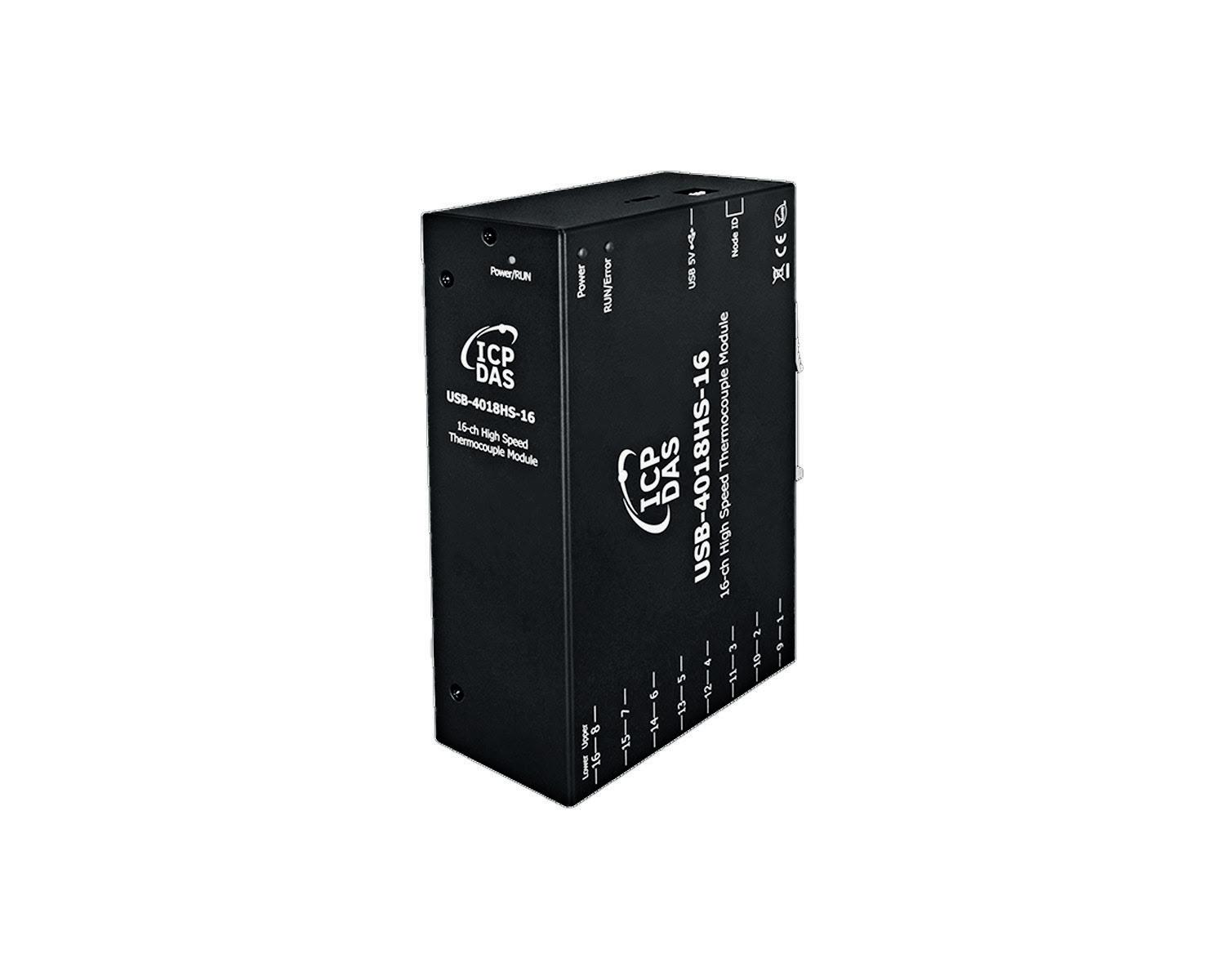
Safe proximity switch PSENini is back
The inductive safety switch PSENini detects the approach of metallic objects without contact and supplies the necessary safe signals via positions and end limits, with safety and precision. PSENini can also be used to generate the pulse for counting tasks or for detecting rotational movements without the need for uniquely coded actuators. It is spacesaving, reacts to metals, and is easily integrated into the machine.
The inductive safety switch PSENini detects the approach of metallic objects without contact and supplies the necessary safe signals via positions and end limits, with safety and precision. PSENini can also be used to generate the pulse for counting tasks or for detecting rotational movements without the need for uniquely coded actuators. It is spacesaving, reacts to metals, and is easily integrated into the machine.
Company: ICP Electronics Australia
Phone: (02) 9457 6011 Website: icp-australia.com.au

48 Xx Xx
Xx Xx XX XX Manufacturers’ Monthly May 2024 WHAT’S NEW
Image: ICP Electronics Australia Image: Pilz Australia
Inductive proximity switches PSENini are versatile in use
The inductive safety sensors are used in a broad range of industries, such as in packaging plants, food and beverage, and tool-making sectors. The standardised OSSD safety outputs on the inductive safety switches make integration simple. It enables a direct connection to the appropriate safety controller, such as PNOZmulti, myPNOZ, or PSS4000, for example.
Safe position detection
When integrated into lifting crane applications, the inductive safety switch PSENini detects the respective end limits safely and reliably. PSENini identifies the current position of the lifting crane and, in conjunction with the appropriate safety controller - such a s the configurable safe small controller PNOZmulti 2 for example – guarantees that the lifting crane moves safely. With an operating distance of 15 mm, the cube-shaped proximity switch PSEN in-D-A-N is ideal for this application.
Safe speed monitoring


switches PSENini, with their compact design and an operating distance of 2 to 10 mm, are ideally suitable in this case.
Key features:
The inductive proximity switch PSENini also enables safe speed monitoring. In this scenario, it determines the exact position of turntables, to ensure that the required machining is carried out at the respective positions. Often there is little space available with these applications, so the cylindrical proximity
• Reliable, with no blind range: no minimum distance required between sensor and object
• Versatile application options: four versions enable operating distances from 2 to 15 mm
• C an be used up to PL d, Cat. 2 (EN ISO 13849-1) / SIL 2 (IEC 62061); redundant use enables up to PL e, Cat. 3/SIL 3
• C an be used in hygiene-critical areas: stainless steel housing offers protection class IP68/IP69
• L ED status indicator enables rapid diagnostics
• For versatile and robust use: insensitive to vibration, dust, and humidity
• Easy to integrate: OSSD safety outputs enable direct connection to the safety controller
Company: Pilz Australia
Phone: 1300 723 334
Website: sales@pilz.com.au
Online: www.pilz.com.au




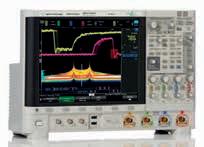


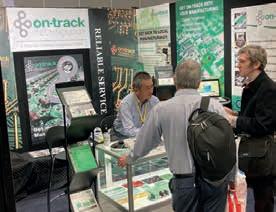


49 manmonthly.com.au Manufacturers’ Monthly
electronics design
electronics design & a ssembly expo Discover New Technologies in Electronics and Hi-Tech Manufacturing See, test and compare the latest technology, products and turnkey solutions for your business In Association with Supporting Publication Organised by CONFERENCE SMCBA CONFERENCE The Electronics Design and Manufacturing Conference features seminars and workshops from international experts on the latest innovations and solutions for design and assembly. Details at www.smcba.asn.au
Image: Pilz Australia
& a ssembly expo

THE LAST WORD
DR JEFF WILSON – DIRECTOR, ECONOMICS AND RESEARCH,
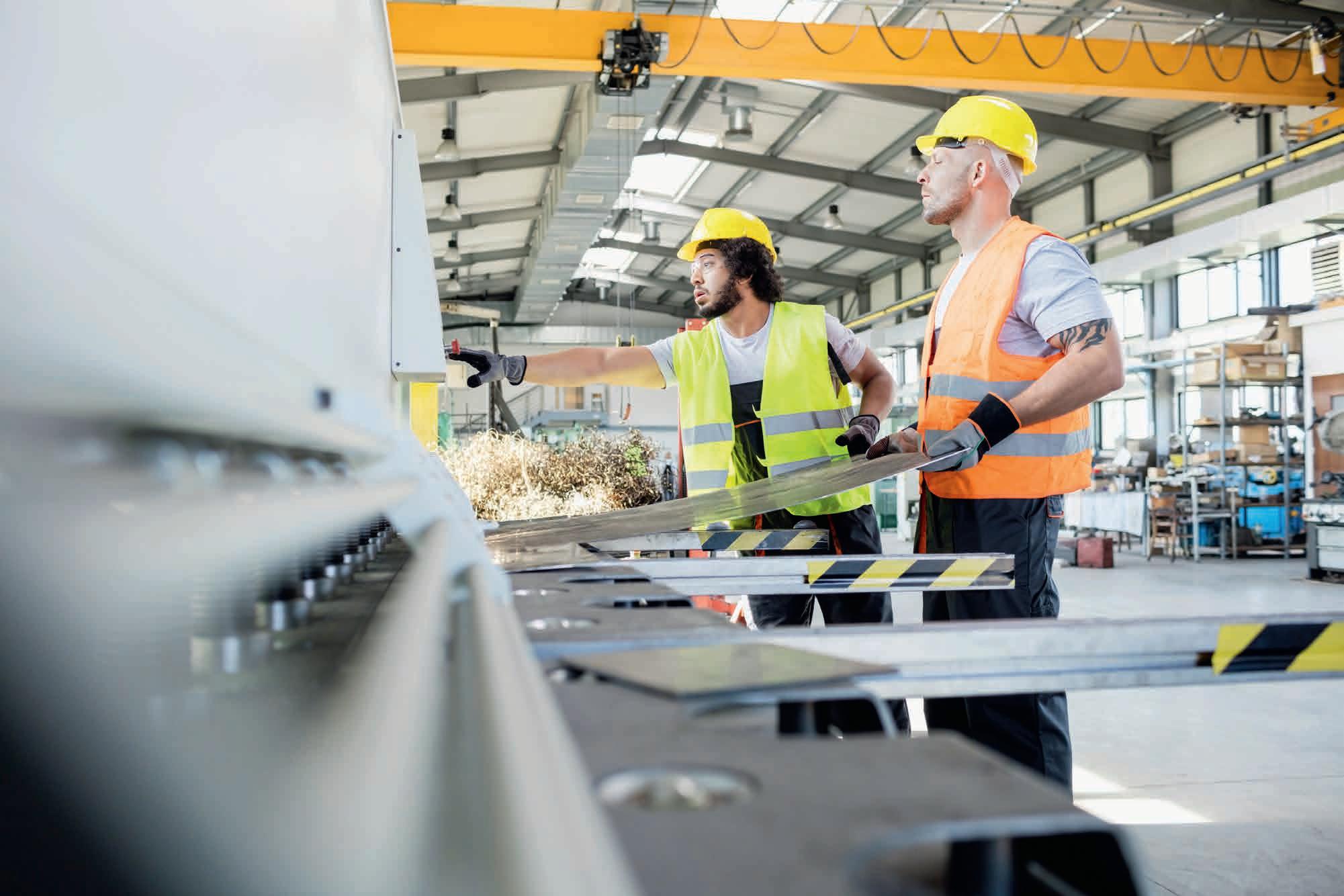
Measuring progress in Australia’s energy transition
The decarbonisation of the Australian economy will be one of our most significant transitions in coming decades. More than just substituting renewables for hydrocarbons, it will require major systems change as we transition our energy systems – for households, transport, industry, and agriculture – towards new architectures that can deliver net zero carbon emissions.
In recent years, there have been huge investments in energy transitions technologies in Australia. These include new generation capacity for renewables, new transmission and storage infrastructure, electrification, and decarbonisation in heavy industry, as well as the arrival of EVs into the transport system.
How are these investments changing Australia’s energy system? How much progress has been made in moving towards decarbonisation, and how much further do we have to go?
Data from the ABS’s Energy Account 202122 offers surprising insights. Three quarters of Australia’s energy use is by industries, not households. We’ve been very successful at improving energy efficiency, but not achieved much when it comes to electrification. And while we’ve quadrupled renewables in just a decade, we still have a long way to go to meet our energy needs from net zero sources.
Direct use by households – which includes our use of privately-owned cars – only contributes 22 per cent of net energy use in Australia. Rather, it is businesses that consume the bulk of Australia’s energy supply. Energy-intensive industrial sectors – manufacturing, mining, construction, agriculture, and utilities – together account for 51 per cent of national energy use.
Of all industries, manufacturing is an especially prominent energy user. Its nearly 1000 petajoules of energy a year is the largest of any industry, and about a quarter of the national total.
This data shows that industrial decarbonisation is where the heavy lifting will occur for Australia’s energy transition. So how is industry doing in preparing itself for the lift?
Alongside the more challenging and costly energy transition strategies, Australia should be sure to exhaust the easier and cheaper options first. Improving energy efficiency is some of the
lowest hanging fruit.
Over the last decade, Australian industries have collectively reduced their energy intensity –measured as gigajoules of energy used per million dollars of output – by a significant 21 per cent. Households have also done their part, cutting per person energy use by 23 per cent over the same period.
Industry-level efficiency gains had reduced national consumption in 2021-22 by about 620 petajoules per year compared to baseline levels a decade earlier, while households contributed another 280 petajoules worth of efficiency savings.
Given Australia currently consumes 4144 PJ of energy per year, about a fifth of the national decarbonisation lift has already been achieved simply by not using the energy in the first place. But once we’ve cut down our energy use, how do we decarbonise what’s left? Electrification is
50 Manufacturers’ Monthly May 2024
Image: moodboard/stock.adobe.com.au
THE AUSTRALIAN INDUSTRY GROUP

an important, if sometimes under-appreciated, enabler of the energy transition.
The adoption of EVs has attracted public attention. But industrial electrification equally matters. Significant volumes of hydrocarbons are used not for power generation, but as a direct source of energy. For example, around half of the Australia’s natural gas consumption is used directly in manufacturing.
The electrification of these kinds of industrial processes, where is it technically and economically feasible to do so, will be critical to allowing grid-supplying renewables to be substituted for hydrocarbons.
Unfortunately, our progress on electrification is not nearly as strong as for energy efficiency.
Australia’s electrification rate – the share of final energy use that comes from electricity – has barely budged. The national rate increased from 22 per cent to 24 per cent over the last decade, with most industries turning in only modest increases of 1 or 2 per cent.
Electrification rates will not necessarily need to reach 100 per cent to achieve the net zero transition. The use of biofuels and green hydrogen will mean there are some lasting uses of
hydrocarbons, particularly for chemical feedstock uses that simply can’t be electrified.
But electrification will need to do a lot of the heavy lifting, through technologies like hightemperature heat pumps and thermal batteries. And with limited progress made so far, most of Australia’s electrification journey remains ahead of us.
As we electrify the energy system, the parallel step is to build out and connect renewables to the grid. In international comparison, Australia is relatively well positioned for the renewables buildout. While water constraints limit hydropower, Australia is very well endowed with sun and wind resources.
Over the last decade, Australia’s supply of renewables has quadrupled: from 77 to 291 petajoules per year. And as hydropower has been stable, the headline numbers hide much higher growth rates for the other renewables: eight-fold growth for wind generation, and twenty-two-fold growth for solar.
Renewables have increased their share of national electricity use from 8 per cent to 30
per cent renewables penetration by 2030, before moving to near-total renewables by 2050.
The path to achieve this is complex. We not only have to build enough renewables to meet our current needs, but also to meet growing demand as electrification shifts industry and transport onto the grid.
To turn those variable renewables into a reliable system we’ll need new transmission, battery and pumped hydro energy storage, and peaking generators burning gas and, progressively, hydrogen or biogas.
While there are some uncertainties around the precise figures required, recent AEMO estimates suggest electrification of the domestic economy will approximately double electricity demand by 2050. Total generation capacity would actually be around six times today’s level, given the role of variable renewables.
So, while we have reached 30 per cent renewables of electricity demand today, we are only about a sixth of the way to the annual clean energy output we ultimately need.
Quadrupling our renewables capacity in just ten

51 manmonthly.com.au Manufacturers’ Monthly
Image: zhengzaishanchu/stock.adobe.com
Australian industries cut energy intensity by 21 per cent over a decade, measured as gigajoules per million dollars.

At Capral, we are experts in the supply of extruded and rolled Aluminium products along with aluminium processing solutions.
Our CNC flatbed routers in Perth, Western Australia, can deliver accurate and efficient cutting and making of complex shapes with optimal material utilisation.
Capral’s experienced team are experts in nesting for the marine and transport industries and committed to collaborating with our customers to ensure exceptional outcomes for each project. If it’s aluminium processing you need,

1300 ALUMINIUM capral.com.au

































































































































